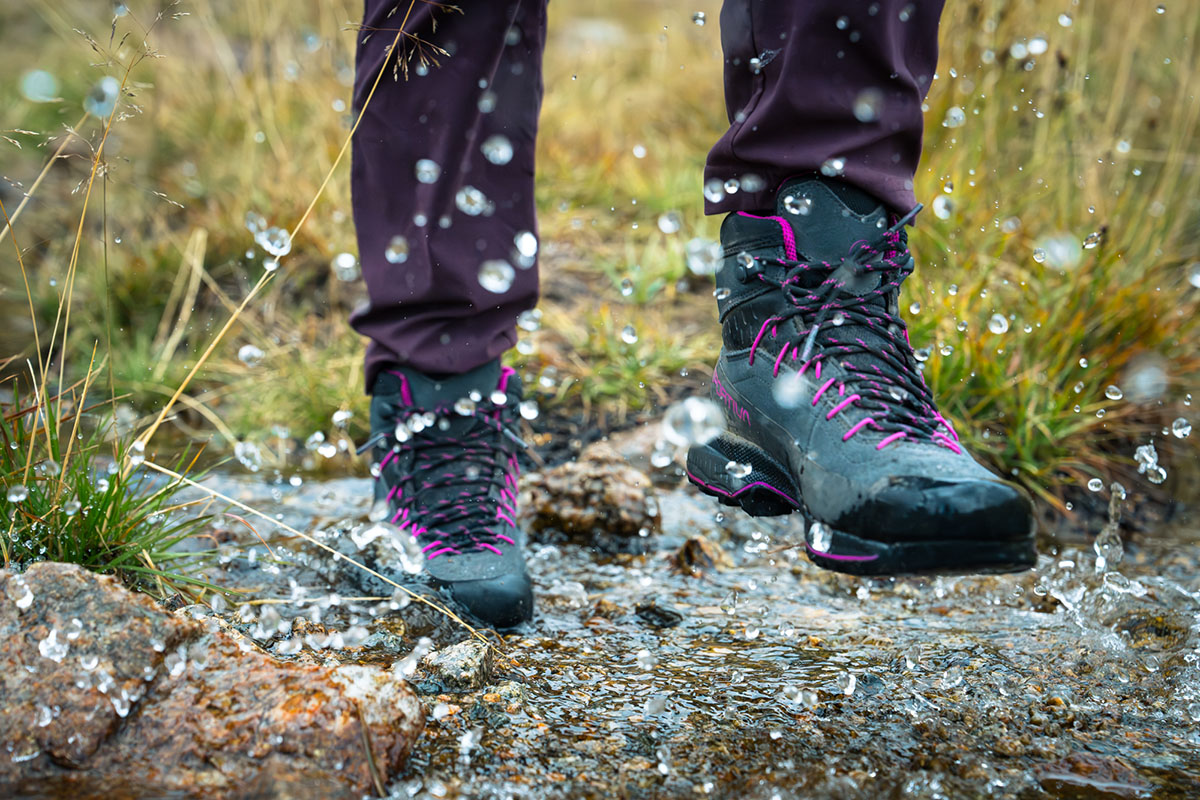
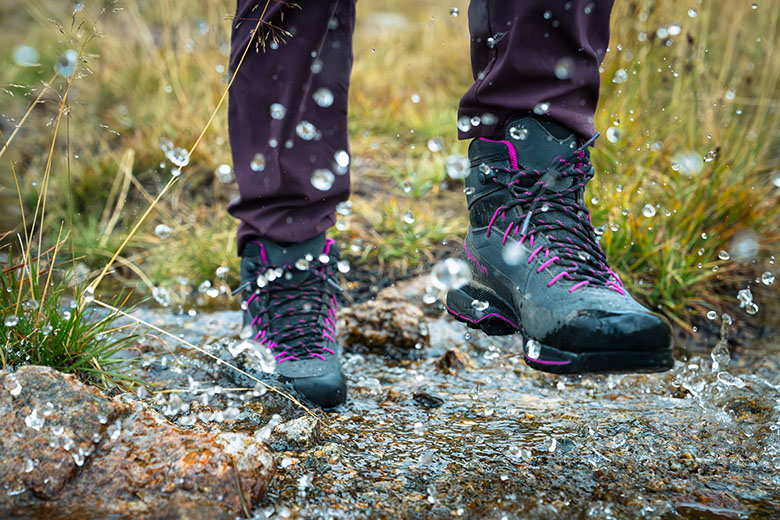
For the best combination of protection and support on the trail, look no further than a hiking boot. Compared to other forms of hiking footwear, boots are epitomized by their mid-height build, which offers best-in-class stability on technical terrain or while hauling a heavy load. A recent push has led to lighter and more flexible designs, but a number of quality traditional leather models are still available. Below we break down the best women's hiking boots of 2025, from lightweight, trail-runner-inspired designs and solid all-around models to rugged and protective boots built for mountain terrain. For more information, see our comparison table and buying advice below the picks, along with details about our testing process. For a wider look at the market, we've also put together lists of the best hiking boots, which covers both men's and women's styles, as well as the best hiking shoes and best women's hiking shoes.
Editor's note: We updated this guide on July 14, 2025, to update the Salomon X Ultra Mid Gore-Tex to its newest iteration, version 5, after testing it on day hikes and backpacking trips in Washington state.
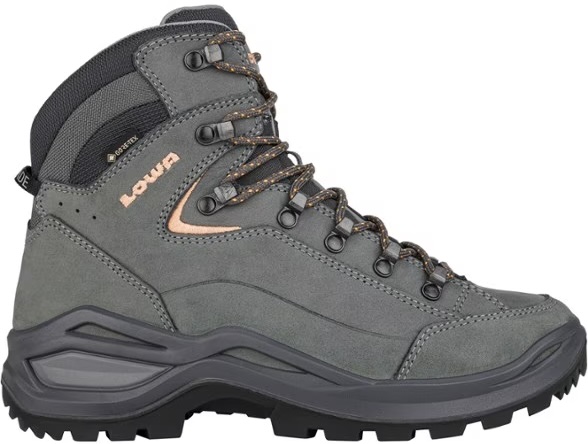 Category: All-around
Category: All-around
Weight: 2 lb. 2.2 oz.
Waterproof: Yes (Gore-Tex)
What we like: Great support, comfort, and protection for covering long distances with a full pack.
What we don’t: Overkill for easy hiking; only offered in a waterproof version.
Year after year, Lowa’s Renegade is one of the most beloved hiking boots on the trail, combining the look, feel, and performance of a traditional design with an relatively low weight. As we’d expect from a burly leather boot, it features a hardwearing design and stable construction that translate to great support and protection on technical trails. But the Lowa nails the comfort equation, too: The boot comes in wide, narrow, and regular widths, and—unlike the more streamlined boots here—features a tall and stiff collar for noticeable ankle support. Plus, the latest Evo model features fewer seams to reduce pressure points and an updated midsole for added comfort. All told, the Renegade is a great middle ground between a bulky leather boot and a lightweight synthetic design, earning it our top vote for demanding backpacking trips that cover a variety of terrain.
But while the Renegade is a great option for hikers who prioritize support and protection, it will be overkill for some. In the age of fast-and-light travel, many modern trail-goers will be willing to trade some of the Lowa’s strong suits for a synthetic boot that feels lighter and nimbler underfoot (it doesn't help that the latest Evo version is 3.2 oz. heavier than its predecessor). Further, the Renegade is only offered in a Gore-Tex version, which is great for shoulder-season or mountainous hikes but will overheat in warmer conditions. Still, for tricky terrain or covering long distances with a full pack, the Lowa is a high-quality and durable all-rounder that puts it all together better than most.
Read more: Lowa Renegade GTX Mid review (prior version)
See the Lowa Renegade Evo GTX Mid
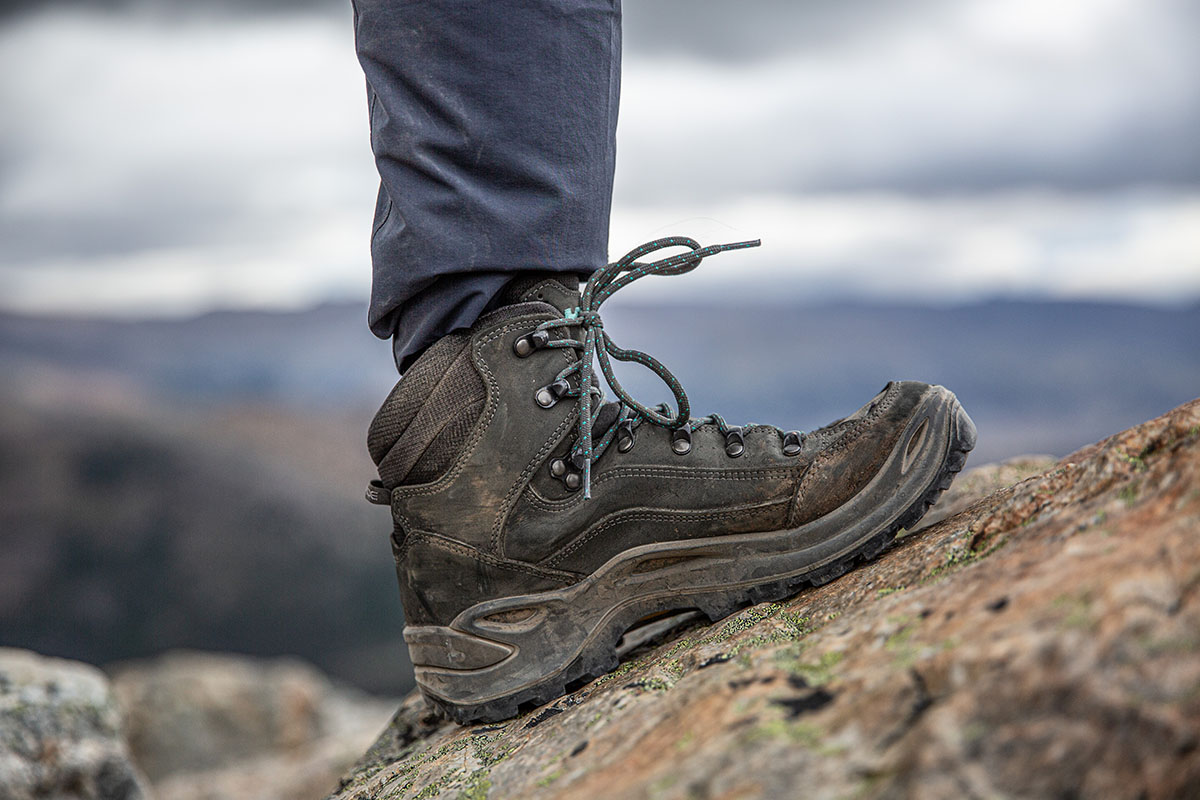
 Category: All-around
Category: All-around
Weight: 1 lb. 11.1 oz.
Waterproof: Yes (M-Select Dry)
What we like: A legendary boot that's durable, comfortable, and affordable.
What we don’t: Lacks performance for long days, rough trails, or heavy loads.
If you’re looking to hit the trail without breaking the bank, Merrell’s Moab 3 is a no-brainer purchase. More than almost any other boot, the Moab has achieved legendary status for its combination of performance and comfort at a low weight and price point, and the latest "3" carries the torch. The nubuck leather upper is protective and durable, and mesh panels along the top and sides keep air moving on hot days. In terms of traction, Vibram’s TC5 outsole offers decent grip on everything from hard-packed dirt to rock, and you get a nice amount of cushioning by way of EVA foam in the midsole. We also came away impressed with Merrell’s in-house waterproofing, which held up well on a recent and very rainy hiking trip on the Olympic Coast. For hikers and backpackers who stick mostly to maintained trails, we wholeheartedly recommend the Merrell Moab 3 Mid.
What are our gripes with Merrell’s popular budget boot? On particularly technical trails—and especially on wet terrain like mud and snow—traction and stability fall short of grippier and closer-fitting designs like the Lowa Renegade above and La Sportiva Ultra Raptor II below. Further, despite clocking in under 2 pounds, the Moab can feel clunky underfoot, especially if you’re used to a more modern trail runner or lightweight boot. But the leather build is fairly tough to kill, and the Moab is truly in a class of its own when it comes to performance for the price. For a step up in protection, Merrell also offers the boot with a more premium Gore-Tex membrane, which costs $20 more but still strikes us as a solid value for what you get.
See the Merrell Moab 3 Mid Waterproof
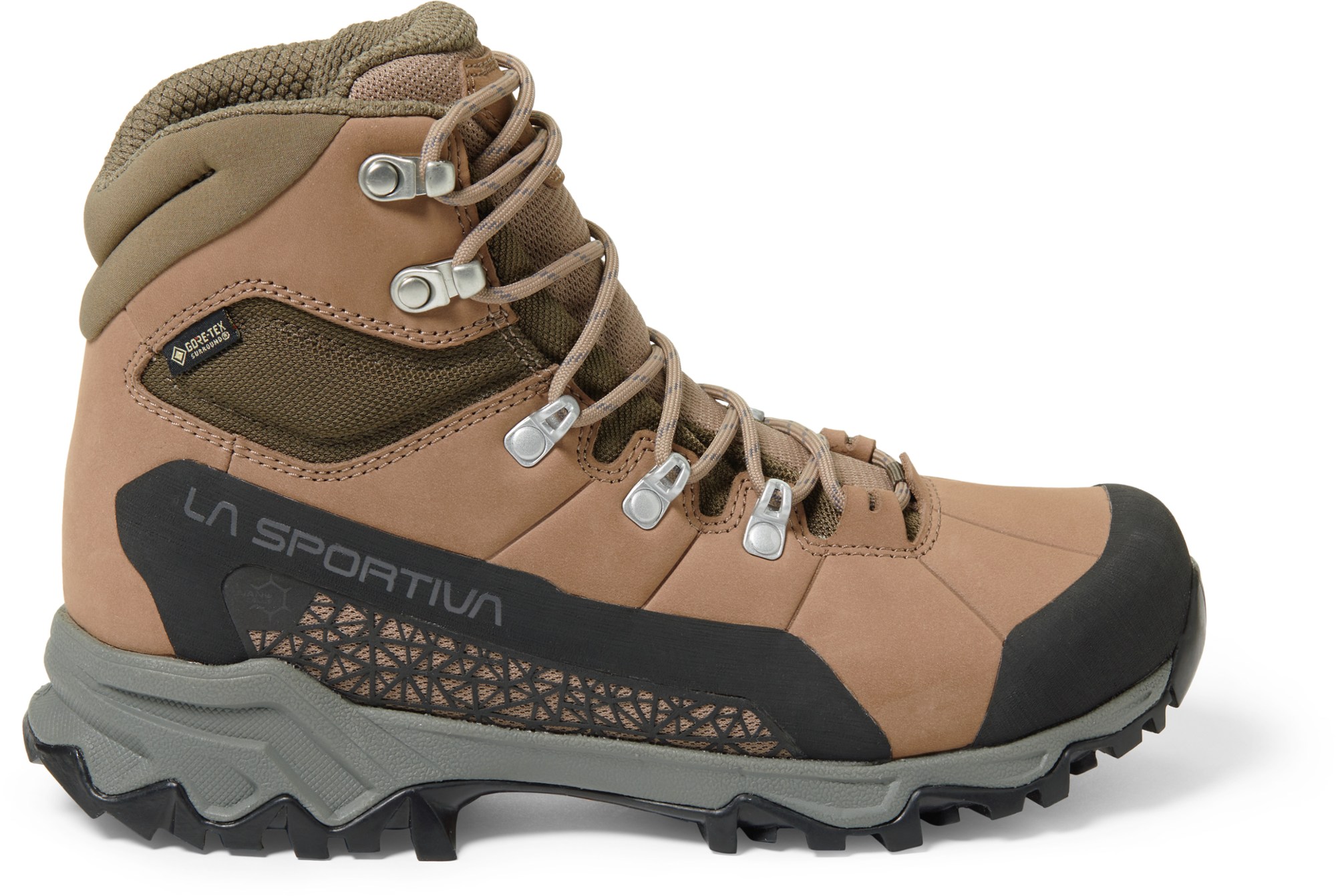 Category: All-around/lightweight
Category: All-around/lightweight
Weight: 1 lb. 10.8 oz.
Waterproof: Yes (Gore-Tex Surround)
What we like: A lightweight leather boot with excellent breathability.
What we don’t: A bit narrow (wide sizes are available) and expensive.
La Sportiva’s Nucleo High II GTX is a quintessential modern boot: light and nimble but with enough support for day hiking and most backpacking trips. At just 1 pound 10.8 ounces, the Nucleo is just as lightweight as many synthetic options on this list, but its leather construction gives it a boost in durability and protection. In this way, it's fairly similar to the brand's own TX Hike Mid below, but you'll notice a more cushioned and sprightly feel with the Nucleo High, which is best suited for established trails. This boot also boasts impressive breathability, which comes by way of a Gore-Tex Surround liner and Nano-Cell technology. In short, Gore-Tex Surround breathes not only out of the upper like most waterproof designs, but also through the sole—which means your feet can dump heat on all sides. You also get patches of Nano-Cell mesh along the sides of each foot—great for keeping air moving—covered with a web-like patch of rubber to maintain durability.
Monikers and fancy tech aside, it all adds up to a really breathable and durable design, particularly for a boot in this weight class. You do pay a premium for the tech, and like many La Sportiva offerings, the Nucleo runs narrow (wide sizes are available). But all told, the Nucleo is a nice upgrade in performance and build quality from an alternative like the Merrell Moab 3 Mid above—with a much nimbler feel than the small weight difference would suggest. Of note: We originally had Scarpa’s Rush 2 Mid GTX ranked here, but it’s low on stock at the time of publishing. That said, if you’re on the hunt for a sleeker, running shoe-like boot with enough support to keep up on off-camber trails, you can still find it online at a discount while supplies last.
See the La Sportiva Nucleo High II GTX
 Category: Lightweight
Category: Lightweight
Weight: 1 lb. 8.1 oz.
Waterproof: No (available)
What we like: Flat and roomy footbed offers slipper-like comfort.
What we don’t: Disappointing stability on technical terrain; heavier than the outgoing version.
Altra’s Lone Peak trail running shoe has developed a serious following among comfort-seeking thru-hikers, making the mid-height version an intriguing concept. Combining ankle support and protection with the Lone Peak’s trademark wide toe box, generous cushioning, and zero-drop design, the Hiker 3 offers instant comfort alongside extra performance on tricky terrain or when carrying a load. Further, at just 1 pound 8.1 ounces, it’s among the lightest boots here (although a notable 2.8 oz. heavier than the outgoing "2"), which is truly a game-changer for high-mileage days. We’ve recommended various iterations of the Lone Peak to dozens of friends and acquaintances who’ve struck out with more traditional hiking footwear and have yet to lead anyone astray.
But as a more serious backcountry boot, the Lone Peak Hiker falls short. In testing the past-generation "2" in southern Patagonia, which is very similar to the latest version, we called the boot our “mountain slipper,” referring to its comfortable yet sloppy feel. To be fair, Altra did tweak the heel collar for added security during their recent update, and they also revamped the MaxTrac rubber outsole for improved grip (we found the prior version to be lacking in bite on rock and wet hardpack). We'll report back after thorough testing, but all signs point to the Hiker 3 being one of the most capable and well-built Lone Peaks yet—especially for those with wide or particular feet. For a different spin on the mid-height design, Altra also makes the Lone Peak 9 Waterproof ($180), which features a taller collar, synthetic upper, and waterproof membrane. Finally, we recently tested Altra's own Olympus 6 Mid GTX ($220) on a backpacking trip in Wyoming and enjoyed its comfortable and capable feel, but the Lone Peak is significantly lighter and cheaper.
Read more: Altra Lone Peak Hiker 2 review
See the Altra Lone Peak Hiker 3
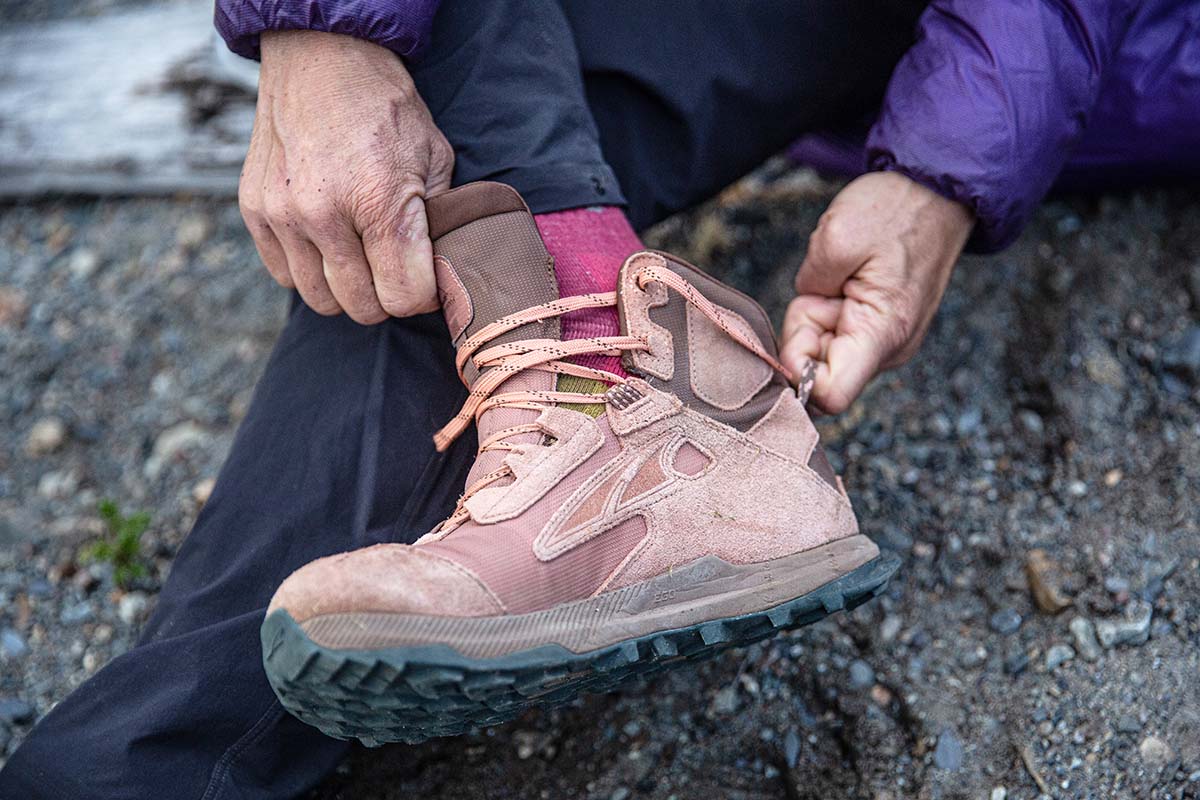
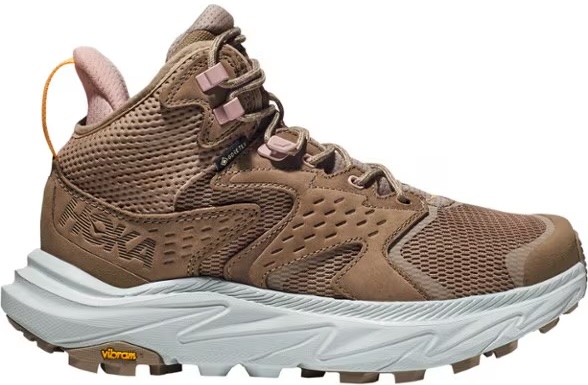 Category: All-around
Category: All-around
Weight: 1 lb. 13.4 oz.
Waterproof: Yes (Gore-Tex)
What we like: Extremely comfortable; surprisingly stable and supportive.
What we don’t: Polarizing looks; outsole lacks durability.
Well, oh well, hiking boots sure are getting more fun of late. Popular running shoe brand Hoka, which is known for its lightweight and cushioned designs, has made a serious push in the hiking footwear market. Our favorite from their lineup is the Anacapa 2 Mid, which features Hoka’s well-known springy midsole, a rockered shape for a smooth ride on the trail, and a beefed-up construction that includes durable nubuck leather and a Gore-Tex waterproof liner. In testing the Anacapa on a backpacking trip in Colorado’s San Juan Mountains, we were pleased with its fast-moving personality that nicely mixes a nimble, trail runner-like feel with surprisingly good stability and support—reminiscent of a hiking boot.
The Anacapa was updated with a focus on more sustainable materials, along with a few noteworthy changes to the midsole and upper. With a less intrusive heel counter, additional tongue padding, and slightly softer midsole, the 2 is arguably more comfortable than the old version, and Hoka also enhanced the toe box for more durability and protection. However, we were surprised to see that the Vibram Megagrip outsole remains virtually unchanged—like the original, it features large sections of blown rubber that are susceptible to damage from rocky trail use. And it almost goes without saying that the boot’s appearance will be a dealbreaker for some, but we’ve been impressed with the design, which goes a long way to mitigates foot fatigue without compromising much in the way of stability or protection. If you stick mostly to established trails and prioritize cushy comfort, the Anacapa has a lot to offer.
See the Hoka Anacapa 2 Mid GTX
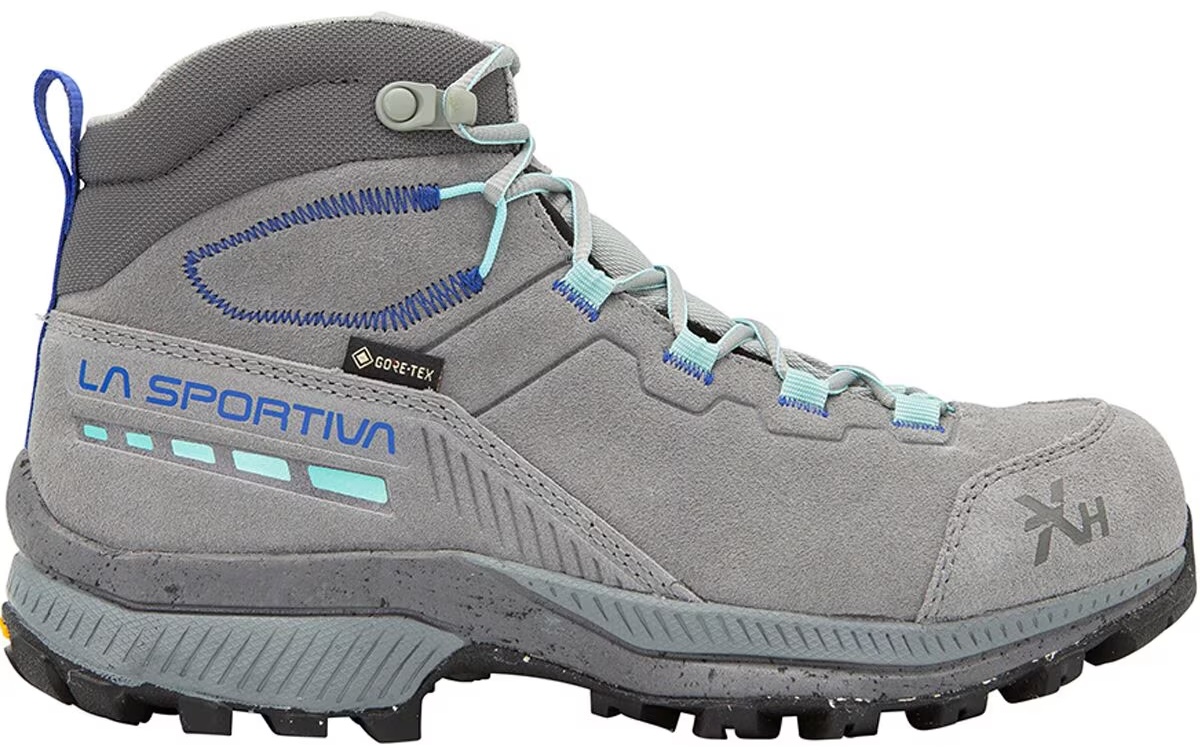 Category: All-around/mountain
Category: All-around/mountain
Weight: 1 lb. 12.6 oz.
Waterproof: Yes (Gore-Tex)
What we like: A lightweight yet capable off-trail boot; roomy fit is comfortable and easy to break in.
What we don’t: Doesn’t bulldoze through loose terrain quite as well as a burlier, stiffer design.
La Sportiva’s TX collection has traditionally been home to some of our favorite approach shoes (including the TX4), and the TX Hike Mid extends the lineup to hikers and backpackers. The result is a hiking boot that’s very capable in mountain terrain yet still agile, lightweight, and comfortable on long sections of trail. We tested the leather version on a five-day high traverse through Washington’s Glacier Peak Wilderness and found it to be the right tool for the job. It handled the trail approach with ease, and once in the high country offered ample stability, traction, and protection for crossing talus fields, boulder-hopping along ridgelines, and trudging up snow (the boot accommodated our aluminum crampons without issue). And unlike many leather boots, we suffered no break-in period thanks to the wide, comfort-focused last that offers extra space around the mid- and forefoot.
If you’re planning to travel above treeline, there are a few ways you can go with footwear. Some hikers will want to shelter their feet in a burlier and stiffer boot like the Salomon Quest 4 below. These designs can bulldoze their way through snow and talus with ease, but they can be painful to break in and uncomfortable on long sections of easy trail. On the other hand, you can opt for a lighter and suppler boot like the TX Hike Mid Leather, which offers ample protection and stability for most terrain while keeping you feeling nimble and precise. And the nubuck upper also helps to bridge the gap: We found it to be impressively durable (it suffered very little wear even with consistent crampon use), and it certainly helps isolate the feet from the elements. It all comes down to a matter of personal preference, but lightweight footwear is unquestionably the way of the future, and the TX Hike Mid Leather (which also comes in a synthetic version) is one of our favorite mountain-ready designs to date.
Read more: La Sportiva TX Hike Mid Leather GTX review
See the La Sportiva TX Hike Mid Leather GTX
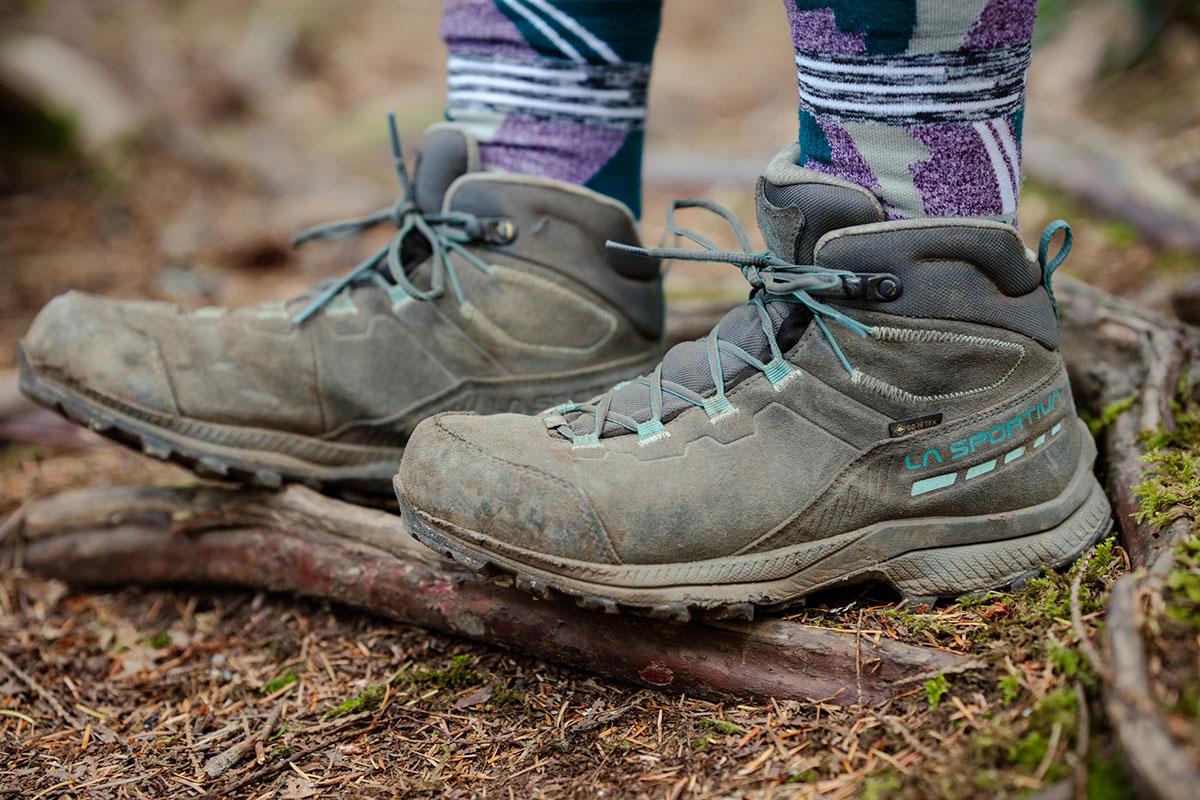
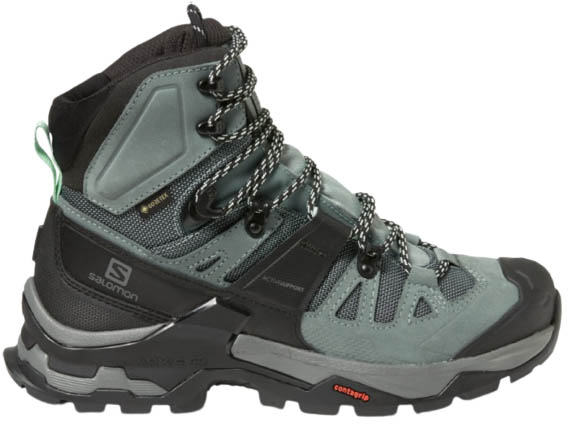 Category: Mountain/all-around
Category: Mountain/all-around
Weight: 2 lb. 5.7 oz.
Waterproof: Yes (Gore-Tex)
What we like: A supportive and protective boot that’s still impressively comfortable.
What we don’t: Overkill for many hikers and backpackers.
Salomon’s X Ultra below is arguably their most popular one-quiver boot for hikers and backpackers, but for a big step up in performance, check out their Quest 4 GTX. Built to provide serious stability and protection on technical terrain, the Quest features a generous dose of leather in the upper, deep and aggressive lugs, and a solid chassis that lends support underfoot and at the heel. It’s also home to one of our all-time favorite lacing systems, with locking eyelets that secure the heel in place and allow you to tailor fit at the forefoot and ankle. To top it off, comfort is surprisingly high—we wore the Quest 4 during a week of trekking in Nepal and were in no rush to take the boots off at the end of each day.
The Quest 4 GTX toes the line between our all-around and mountain categories, and is one of the only boots here to excel in both environments. We’d have no qualms booting up steep snow or crossing loose talus in the Salomon, but it performs well on-trail, too: The outsole is surprisingly flexible for being so burly, and you get a good deal of cushioning by way of EVA foam in the midsole. Compared to the Renegade above, it has a more precision fit and a thicker, more durable upper, but at the cost of a few ounces and a bit less of a planted feel. Keep in mind that both boots are overkill for those who stick primarily to well-established trails. Finally, it’s worth noting we found that the Quest 4 runs large—we’re generally between an 8.5 and 9 in Salomon boots but ended up in a size 8.
Read more: Salomon Quest 4 GTX review
See the Salomon Quest 4 GTX
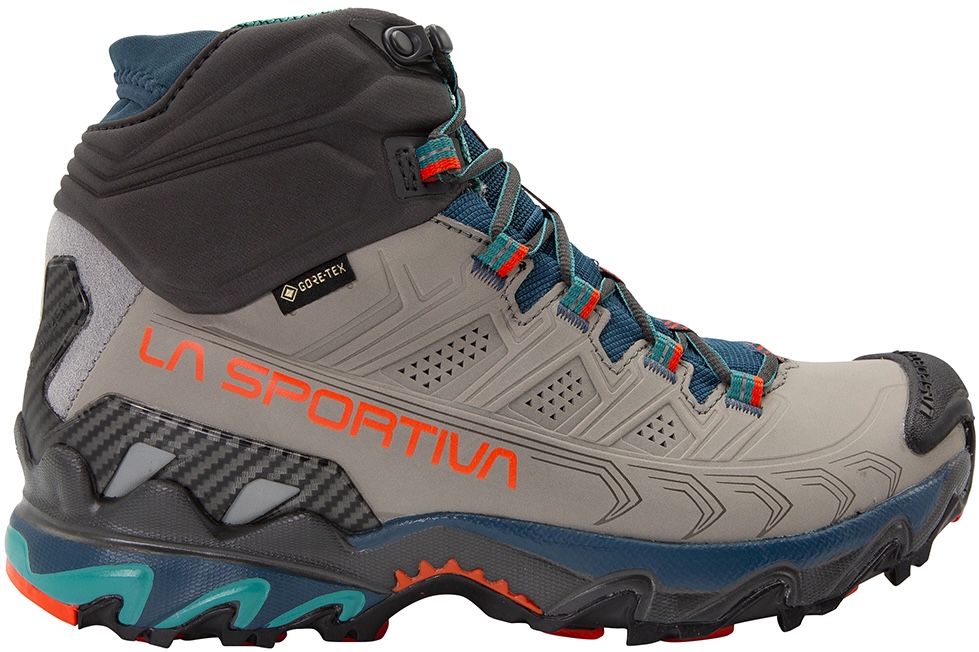 Category: Mountain/lightweight
Category: Mountain/lightweight
Weight: 1 lb. 8.0 oz.
Waterproof: Yes (Gore-Tex)
What we like: A lightweight boot that's tough enough for the mountains.
What we don’t: Feels overbuilt on well-established trails.
La Sportiva’s Ultra Raptor trail runner has earned legendary status amongst the mountain running community, beloved for its high levels of protection and stability alongside a lightweight, trail-runner-esque build. The Mid Leather GTX here takes the low-top shoe to the next level, adding a respectably tall collar and waterproof membrane. The result is a piece of footwear that lands somewhere in between mid-height trail runner and hiking boot, taking with it the best features from both worlds. For fast-and-light mountain-goers, the Ultra Raptor II Mid Leather GTX is a nimble and quick alternative to boots like the Quest 4 and Renegade above.
If you’re headed above treeline and looking for a capable yet lightweight boot, it’s a tough call between the Ultra Raptor II Mid Leather GTX and the TX Hike Mid Leather GTX above. The Ultra Raptor has a more rockered platform, and its Frixion XF 2.0 sole is even grippier on rock than the TX Hike’s Vibram Ecostep Evo rubber. And with beefy toe and heel protection, more padding around the ankle, and a stiffer midsole and outsole, the boot has an overall burlier feel that is right at home on above-treeline terrain. It's worth noting that we previously had the synthetic version of the Ultra Raptor II Mid listed here, but La Sportiva will only be offering the leather model moving forward. We had durability concerns about the synthetic boot's mesh upper, but we're hopeful that the leather upper will hold up better over time (stay tuned for additional feedback after a thorough round of testing).
See the La Sportiva Ultra Raptor II Mid Leather GTX
 Category: All-around/lightweight
Category: All-around/lightweight
Weight: 1 lb. 11.5 oz.
Waterproof: Yes (Gore-Tex)
What we like: Protective yet lightweight, and more durable than the outgoing 4.
What we don’t: Stiff underfoot and not as supportive as burlier boots like the Renegade above.
Salomon’s X Ultra Mid series has been a top contender for years, and we’d be remiss not to mention the updated X Ultra 5 here. The 5 strikes a nice balance between nimbleness (thanks to its lightweight build), stability, and protection. We're also big fans of Salomon's Contagrip rubber, which has proven impressively grippy over a variety of terrain, from loose dirt to patches of mud and snow. The fifth iteration of this classic features a modernized and more durable Kevlar-reinforced upper, a slightly stiffer collar, and a more hard-wearing outsole. It also retains the beloved “winged” chassis of the outgoing model, which seats the heel nicely in the back of the boot when the laces are tightened.
That said, we still have some gripes with the latest design. While stability and durability have greatly increased since version 4, we had some issues with fit and underfoot comfort in the latest version. Our regular size fit too large, which caused some blisters on the trail (we recommend sizing down half a size), and the included Ortholite insole and thinner midsole didn’t offer much in the way of underfoot cushion. To be sure, not everyone will have fit or comfort issues, and we do think that the 5 is an overall upgrade from the previous version, especially in terms of stability and durability. We still prefer a boot with a stiffer collar like the Lowa Renegade above for backpacking with heavy loads, but the X Ultra 5 Mid is a nice choice if you’re trying to find something lighter weight and nimbler.
Read more: Salomon X Ultra 5 Mid GTX review
See the Salomon X Ultra 5 Mid GTX
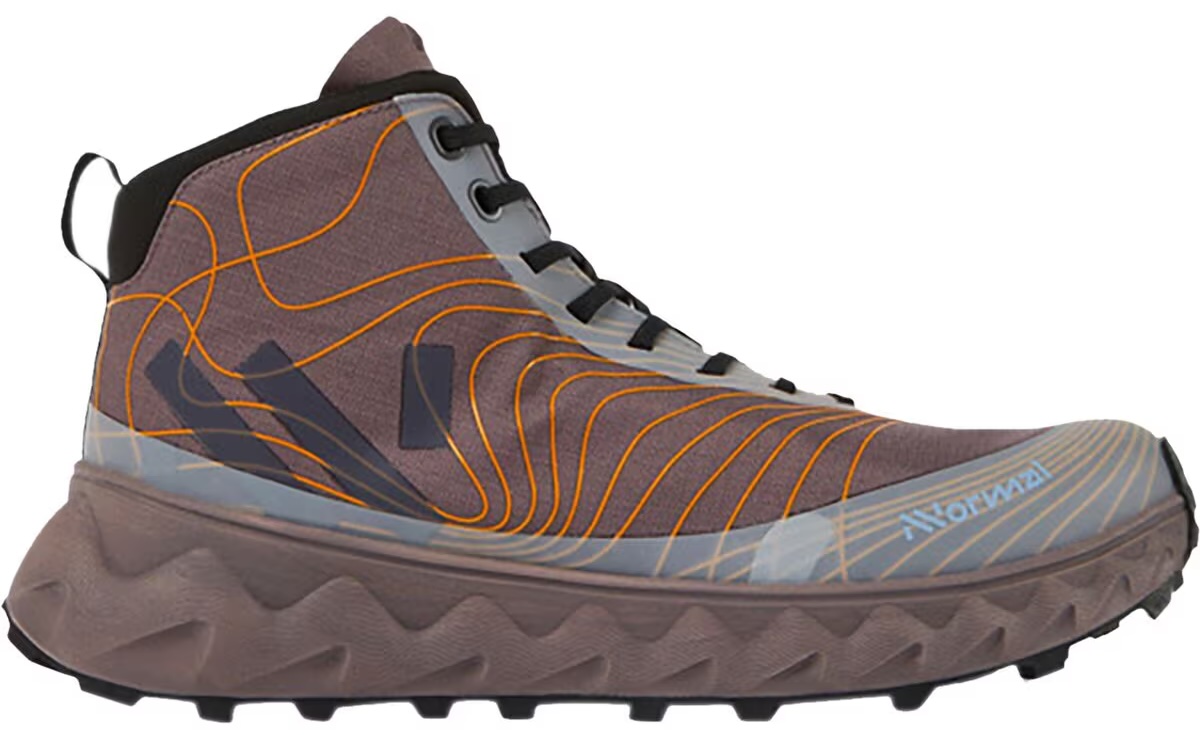 Category: Lightweight
Category: Lightweight
Weight: 1 lb. 5.4 oz.
Waterproof: Yes (Sympatex)
What we like: Impressively light without feeling overly compromised; refreshing take on sustainability.
What we don’t: Not the most cushioned or breathable option; roomy fit, even after sizing down.
What do you get when you combine the expertise of accomplished mountain athlete Killian Jornet with a longstanding, family-owned shoemaking brand focused on transparency and responsible production practices? The answer is NNormal, a relatively new shoe brand creating modern trail kicks like the Tomir Waterproof Boot here. We recently brought the unisex design on a technical, five-day trek deep in the Chilean backcountry and were impressed by its all-around performance. Despite being remarkably lightweight—on par with designs like the Altra Lone Peak Hiker 2 above—the Tomir more than held its own, with better-than-expected support, stability, and durability despite very challenging terrain. We were also pleased by the boots’ Sympatex waterproofing, which felt on par with Gore-Tex in terms of reliability. Added up, the Tomir made a really strong first impression.
However, the Tomir’s solid waterproofing and close-fitting collar detract from breathability. For reference, our tester rarely experiences sweaty feet but came away with damp socks most days (the hot, sun-exposed conditions didn’t help). The boots are also a little lacking in underfoot cushion compared to alternatives like the Altra Lone Peak Hiker 3 above and Salomon Cross Hike 2 Mid GTX below. And fit-wise, we found the Tomir runs noticeably big—we ended up going down a half size and still had ample room for our toes to splay—with a solid ankle lock that makes the on and off process a little tedious. But these are relatively small complaints for an otherwise exceptionally well-rounded lightweight hiker, and we applaud NNormal for their refreshing take on sustainability—rather than simply incorporating recycled materials (which they do), the company keeps their collection deliberately small to minimize their impact and puts a strong focus on circularity to maximize the shoes’ lifespan and reduce waste.
Read more: NNormal Tomir Waterproof Boot review
See the NNormal Tomir Waterproof Boot
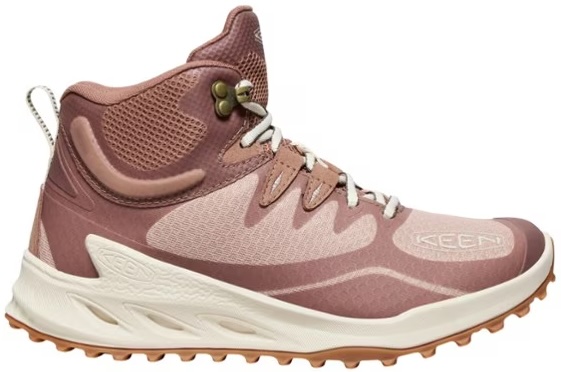 Category: Lightweight
Category: Lightweight
Weight: 1 lb. 8.6 oz.
Waterproof: Yes (Keen.Dry)
What we like: One of the lightest boots here with a fast-moving personality to match.
What we don’t: Feathery build compromises on durability and support.
Newer to Keen’s repertoire, the Zionic Waterproof Mid stands out for its sleek and athletic design, which is a far cry from more traditional leather hikers like their iconic Targhee below. Despite being one of the lightest boot on our list at just 1 pound 8.6 ounces per pair, the Zionic handled a heavy load impressively well on a recent testing trip in Wyoming's Wind River Range. The precise fit and grippy, oval-shaped lugs were two other highlights, especially when navigating rocky terrain. Additionally, the boots were mostly comfortable out of the box—we did experience some ankle irritation from the stiff cuffs—and the brand's in-house waterproof membrane performed admirably during rainstorms and stream crossings, with enough breathability to keep us comfortable while moving quickly on easy sections of trail.
However, as expected given the feathery build, our main concerns with the Zionic Mid have to do with durability and support: The mostly mesh upper isn't particularly well suited for handling rough and abrasive terrain, and after logging more than 100 miles in our pair, they're showing a disappointing amount of wear on the toe. Further, the single eyelet at the collar doesn't lock the ankle down as well as we'd like when the going gets technical or when hauling heavy backpacking gear. But again, the light and nimble feel is certainly a selling point, especially for those who stick to maintained trails.
Read more: Keen Zionic Waterproof Mid review
See the Keen Zionic Waterproof Mid
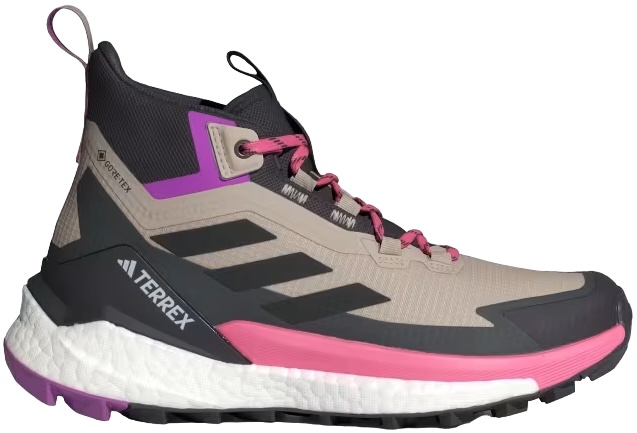 Category: All-around/lightweight
Category: All-around/lightweight
Weight: 1 lb. 15.2 oz.
Waterproof: Yes (non-waterproof available)
What we like: Looks do deceive—this is a capable and well-built boot.
What we don’t: Middling ankle support.
It’s always fun to be pleasantly surprised by a piece of gear, and Adidas’ Terrex Free Hiker 2 did just that. At first glance—or fifth—the boot looks nothing like an outdoor-ready piece. But after sliding them on, our impression quickly changed. The Free Hiker has a sock-like fit that’s super comfortable with great cushioning on the tongue and collar, and the combination of an internal frame and soft Boost midsole does a great job limiting foot fatigue even on demanding days. Throughout our testing, traction also proved to be excellent on everything from wet rock to loose dirt thanks to the tacky Continental rubber and aggressive lug shape. Competitively lightweight and packing a proven Gore-Tex liner, the Free Hiker is a great addition to the market.
The Terrex Free Hiker 2 was a fantastic day hiking option on our trip to Patagonia, but it does come with some limitations. The most polarizing is its looks, which land in the love-it-or-hate-it category. A second more substantive concern is ankle support: While you get surprisingly good stability from the firm platform underfoot (especially compared to other models in the lightweight category), the Free Hiker's mid-height collar doesn't have much to offer over a standard hiking shoe. You do get a fair amount of rigidity in the heel (and a boost in above-the-ankle water protection), but the rest of the collar's materials are fairly soft and unsupportive. Still, the Adidas is a strong performer in the lightweight category, earning it a spot on our list this season.
See the Adidas Terrex Free Hiker 2 GTX
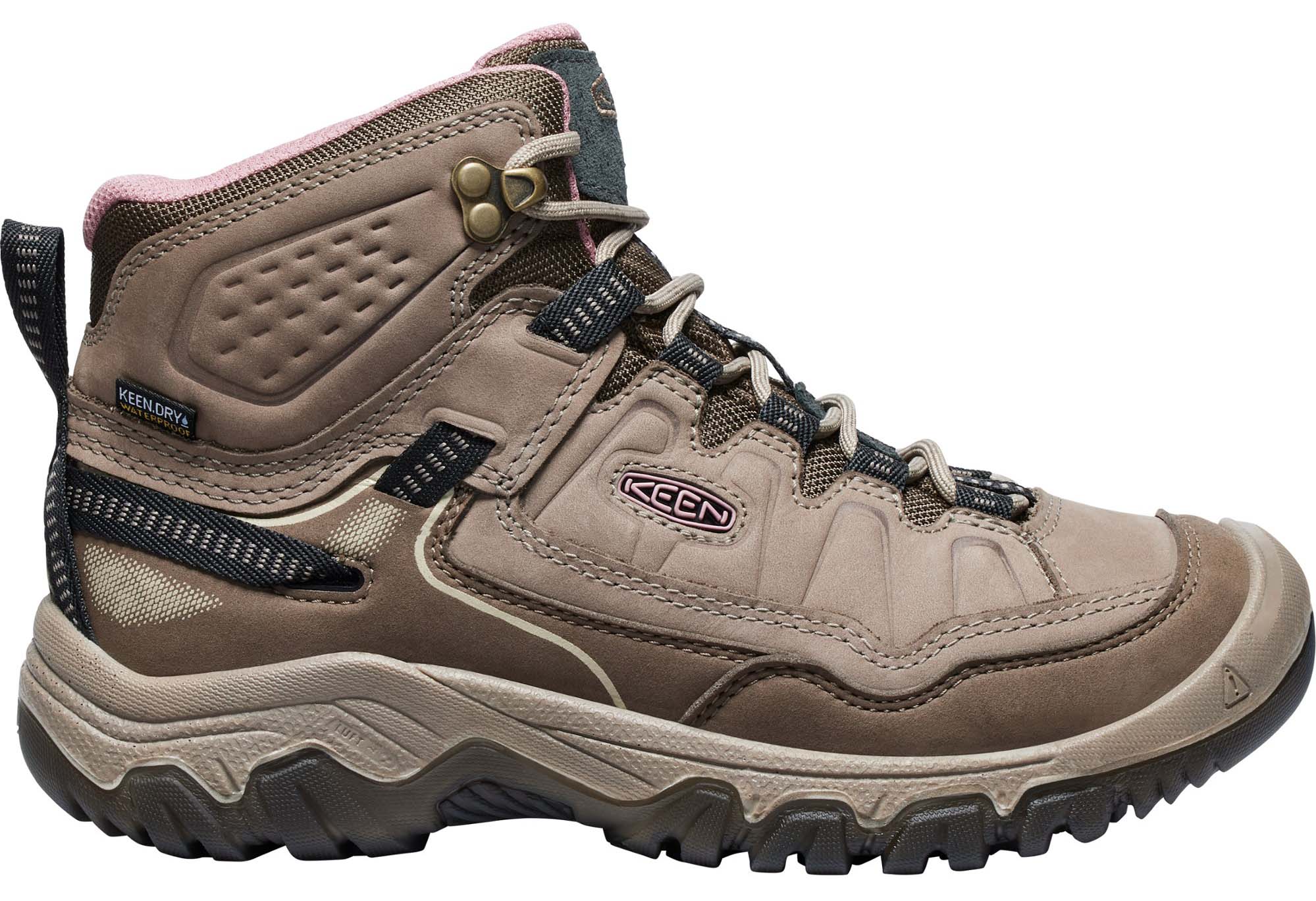 Category: All-around
Category: All-around
Weight: 2 lb. 1.2 oz.
Waterproof: Yes (Keen.Dry)
What we like: A durable trail workhorse.
What we don’t: Pricier than the Merrell Moab 3 Waterproof without enough to show for it; notably heavier than the outgoing version.
Keen's Targhee is a classic hiking boot that goes head-to-head with designs like the waterproof version of Merrell's Moab 3 Mid (above). The leather upper and sturdy outsole aren’t particularly lightweight (especially compared to modern trail runner-inspired boots), but the benefits are excellent stability over rough terrain, great long-term durability, and impressive all-around protection for your foot. The Targhee also boasts a wide toe box, which is great for accommodating swollen feet and a nice alternative to some of the narrower designs here. If you’re in the market for a leather hiking boot, Keen's Targhee IV Waterproof Mid is certainly worth adding to your list.
Among traditional day hiking options, the Keen Targhee IV and Merrell Moab 3 above are two of the most popular boots on the market. Both are very comfortable right out of the box, offer plenty of support for non-technical trails, and can even get the job done on shorter backpacking trips. But while the Targhee’s nubuck leather upper is a little more durable than the Moab’s partial-mesh design, we’re not sure it’s worth the $20 bump in price. In testing, we found the Targhee IV struggled with traction on wet surfaces, leading to noticeable slippage while crossing streams in Wyoming's Wind River Range. The boots also run large, and our tester wished she'd sized down to mitigate the sloppy, imprecise feel. Still, for traditionalists looking for a true leather hiker, the Targhee remains a quality option at a reasonable price.
Read more: Keen Targhee IV review
See the Keen Targhee IV Waterproof Mid
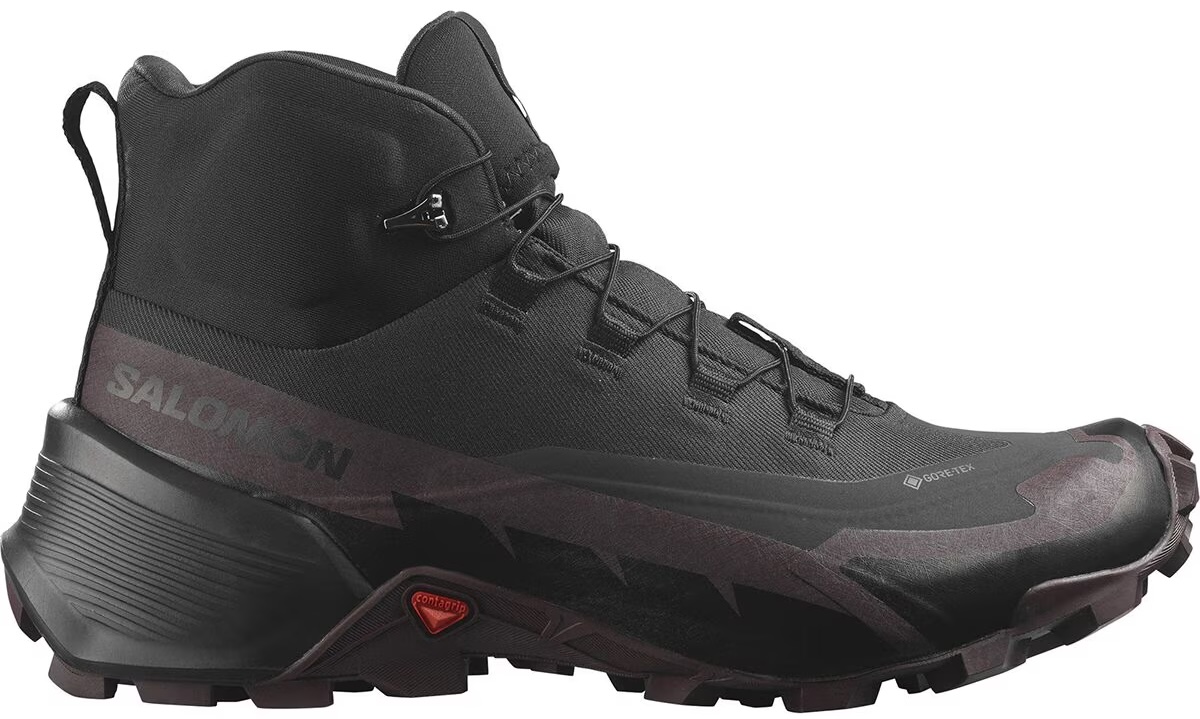 Category: Lightweight
Category: Lightweight
Weight: 1 lb. 9.5 oz.
Waterproof: Yes (Gore-Tex)
What we like: A sprightly hiking boot with impressive grip on soft ground.
What we don’t: Lacks a secure lock at the collar; subpar traction on rock.
If you haven’t yet noticed a trend in our picks, the Salomon Cross Hike 2 Mid GTX should make things abundantly clear. Gone are the days of hitting the trail in leather clunkers—lightweight and nimble hiking boots have all but taken over. And the Cross Hike 2 Mid is about as purpose-built as it gets: Salomon took their Speedcross running shoe (a popular choice for mountain terrain), beefed up the protection and support, added a mid-height collar, and lowered the stack height for greater stability. The result is a boot that’s light and speedy on the trail but robust enough to tackle everything from third-class scrambling to hauling an overnight load.
We wore the Cross Hike 2 Mid while backpacking in Patagonia, and—similar to our experience with the first-gen version—our reviews are mixed. The boot was predictably lightweight and comfortable, and offered impressive traction on soft and wet terrain (in fact, the sole almost looks like a track spike). But one of our biggest gripes was the single eyelet at the collar, which causes the boot to gape open, minimizing ankle support and allowing trail debris to enter (it doesn’t help that the Quicklace system loosens throughout the day). We also experienced early durability issues with the toe cap separating from the upper, and the sharp lugs means traction suffers on smooth rock. At the end of the day, we'll stick with the more well-rounded Nucleo High II GTX above for treks that cover the full gamut of terrain, but the Cross Hike 2 is another solid choice for the lightweight-focused crowd.
Read more: Salomon Cross Hike 2 Mid GTX review
See the Salomon Cross Hike 2 Mid GTX
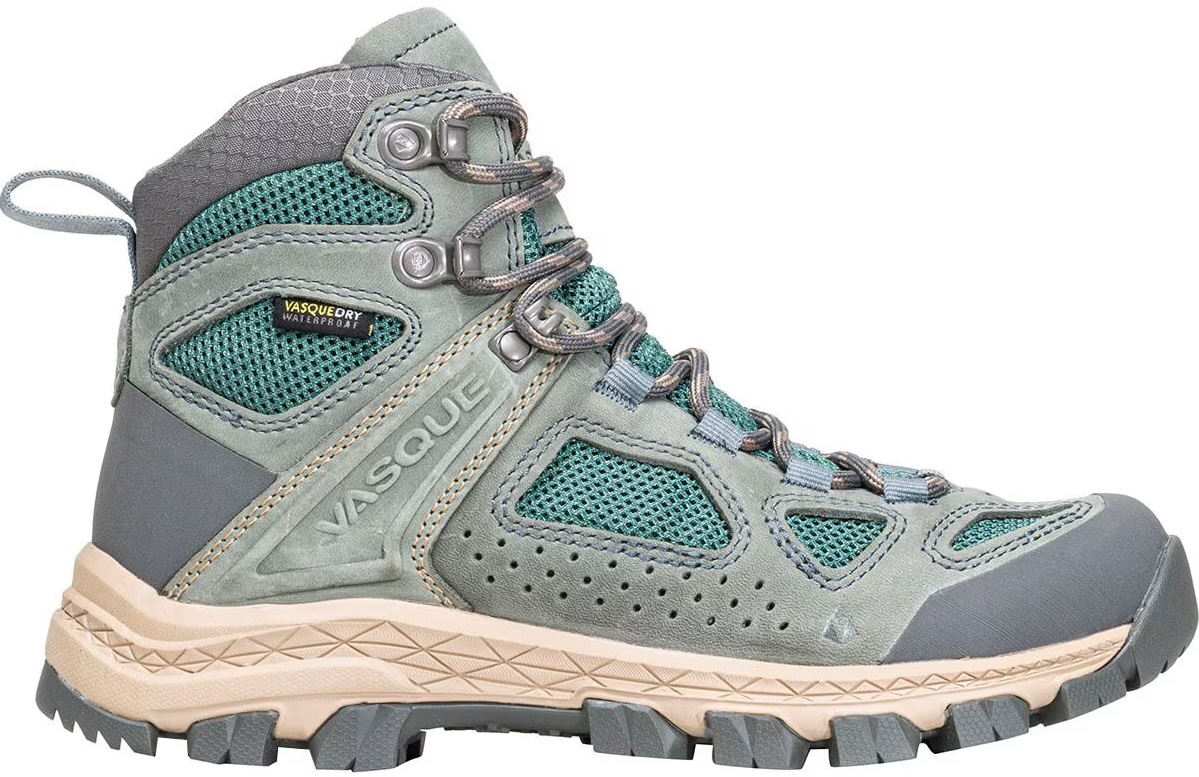 Category: All-around
Category: All-around
Weight: 2 lb. 2.0 oz.
Waterproof: Yes (VasqueDry)
What we like: Great price for a capable and decently well-rounded hiking boot.
What we don’t: Dated look and feel; in-house materials can’t compete with Vibram and Gore-Tex.
Vasque has specialized in hiking footwear for over half a century, and the Breeze has long been the most popular boot in their lineup. The most recent iteration touts a decently modern design and the brand’s latest VasqueDry waterproof membrane, which is built with 25% recycled materials. The Breeze checks in at a similar weight to our top-ranked Lowa Renegade—both models use suede uppers, and the Vasque adds mesh cutouts for better breathability—but is just over $100 cheaper at $160. For a great combination of price and performance, it’s well worth a closer look.
Throughout our testing, we found the Breeze to be fully serviceable for backpacking on everything from easy trails to above-treeline terrain. And with two eyelets above the ankle, you get a lot more stability and ankle support than the more streamlined, lightweight designs here. But the boot doesn’t particularly stand out in any way, and Vasque’s in-house outsole and waterproofing simply don’t measure up to name brands like Vibram and Gore-Tex. What’s more, it’s fairly heavy and dated-looking for the majority of modern hikers. But for the price, the Breeze is a wonderfully durable, comfortable boot that will certainly get the job done.
Read more: Vasque Breeze review
See the Vasque Breeze
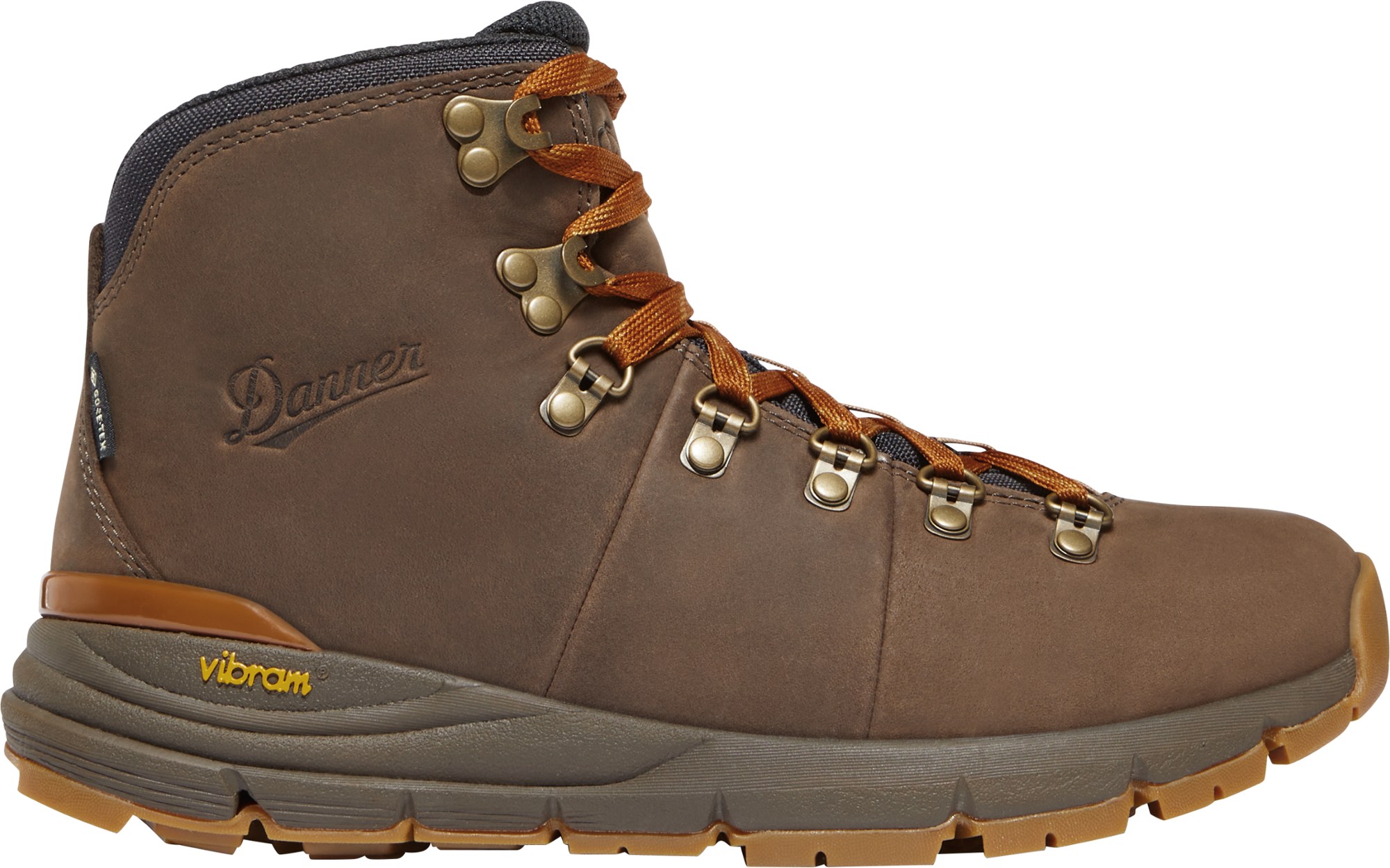 Category: All-around
Category: All-around
Weight: 2 lb. 4.0 oz.
Waterproof: Yes (Gore-Tex)
What we like: Classic Danner looks in a lightweight package; Leaf design can be resoled and rebuilt throughout its lifespan.
What we don’t: Not as stable or protective as most leather boots.
Danner is best known for their throwback, full-leather boots, but their modernized Mountain 600 has struck a chord with the day hiking crowd. The over-the-ankle design is surprisingly flexible underfoot with a cushioned, trail-runner-inspired sole, and has sharp looks with a full suede upper and quality lacing hardware. A Gore-Tex waterproof membrane combined with the water-resistant suede helps keep your feet protected from mud and wet grass, while also providing a light boost in warmth for wearing around town in the cold (to the detriment of breathability). The Leaf is also designed to be worked on by Danner’s professional cobblers, whose services include both resoles and full rebuilds.
Despite being an ode to leather mountain boots of yore, the Mountain 600 shouldn’t be pushed into super technical terrain. The Danner can’t match the performance of boots like the Salomon Quest above or Zamberlan Vioz below in terms of underfoot stability and protection, and the soft suede upper doesn’t provide as much support as stiffer designs. And in terms of price, the Mountain 600 is pretty expensive at $220, especially when stacked up against other cushioned designs like the $195 Anacapa 2 above. But if you prioritize out-of-the-box comfort, styling, and everyday versatility—and like the idea of spending your money on a boot that’s built to last—the Mountain 600 Leaf is worth a look. Finally, it’s also worth checking out Danner’s Trail 2650 GTX Mid, which features a sleek and athletic design more reminiscent of a trail runner.
See the Danner Mountain 600 Leaf GTX
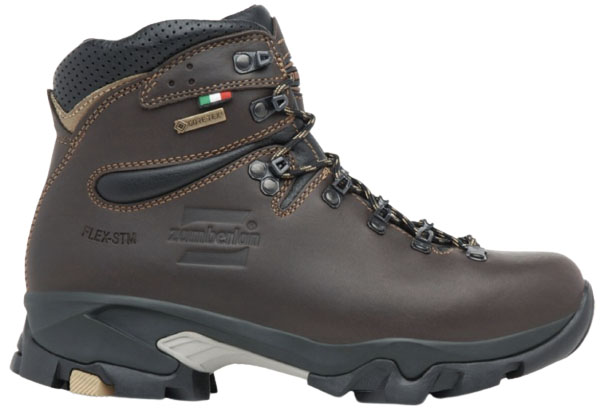 Category: Mountain/all-around
Category: Mountain/all-around
Weight: 2 lb. 13.2 oz.
Waterproof: Yes (Gore-Tex)
What we like: Beautifully made and a stalwart on rough terrain.
What we don’t: Dated design that’s very heavy.
The hiking boot market has been trending away from traditional heavyweight leather designs for years, but there’s still a time and place for these classics. In this category, the Zamberlan Vioz GTX is among the all-time greats. The Italian-made leather construction is gorgeous and built to last, the interior is soft and isolates you amazingly well from a rough trail, and the stiff structure provides reliable support. For long slogs with a serious load or even light mountaineering, the Vioz GTX is a proven choice.
Unfortunately for the Vioz, there is good reason why you see fewer of them on the trail these days. A heavy boot makes it that much harder to cover ground, and at 2 pounds 13.2 ounces, the Vioz weighs more than anything else on this list (and certainly feels like it as the miles add up). The premium leather materials also make this boot the most expensive on our list. In the end, we think even serious backpackers will be better off with boots like the Lowa Renegade or Salomon Quest 4 above in most cases. But the Vioz remains a favorite among traditionalists who want a burly boot, and rest assured that it will be your hiking partner for years to come (you can even resole its Vibram rubber).
See the Zamberlan Vioz GTX
| Boot | Price | Category | Weight | Waterproof | Upper |
|---|---|---|---|---|---|
| Lowa Renegade Evo GTX Mid | $265 | All-around | 2 lb. 2.2 oz. | Yes (Gore-Tex) | Leather |
| Merrell Moab 3 Mid Waterproof | $150 | All-around | 1 lb. 11.1 oz. | Yes (M-Select) | Leather/mesh |
| La Sportiva Nucleo High II GTX | $239 | All-around/lightweight | 1 lb. 10.8 oz. | Yes (Gore-Tex) | Leather/mesh |
| Altra Lone Peak Hiker 3 | $150 | Lightweight | 1 lb. 8.1 oz. | No (available) | Suede |
| Hoka Anacapa 2 Mid GTX | $195 | All-around | 1 lb. 13.4 oz. | Yes (Gore-Tex) | Leather |
| La Sportiva TX Hike Mid Leather | $199 | All-around/mountain | 1 lb. 12.6 oz. | Yes (Gore-Tex) | Leather |
| Salomon Quest 4 GTX | $230 | Mountain/all-around | 2 lb. 5.7 oz. | Yes (Gore-Tex) | Leather |
| La Sportiva Ultra Raptor II Mid | $199 | Mountain/lightweight | 1 lb. 8.0 oz. | Yes (Gore-Tex) | Leather |
| Salomon X Ultra 5 Mid GTX | $185 | All-around/lightweight | 1 lb. 11.5 oz. | Yes (Gore-Tex) | Synthetic |
| NNormal Tomir Boot | $195 | Lightweight | 1 lb. 5.4 oz. | Yes (Sympatex) | Synthetic |
| Keen Zionic Waterproof Mid | $170 | Lightweight | 1 lb. 8.6 oz. | Yes (Keen.Dry) | Synthetic |
| Adidas Terrex Free Hiker 2 GTX | $220 | All-around/lightweight | 1 lb. 15.2 oz. | Yes (Gore-Tex) | Synthetic |
| Keen Targhee IV WP Mid | $170 | All-around | 2 lb. 1.2 oz | Yes (Keen.Dry) | Leather |
| Salomon Cross Hike 2 Mid GTX | $190 | Lightweight | 1 lb. 9.5 oz. | Yes (Gore-Tex) | Synthetic |
| Vasque Breeze | $160 | All-around | 2 lb. 2.0 oz. | Yes (VasqueDry) | Leather/mesh |
| Danner Mountain 600 Leaf GTX | $220 | All-around | 2 lb. 4.0 oz. | Yes (Gore-Tex) | Leather |
| Zamberlan Vioz GTX | $350 | Mountain/all-around | 2 lb. 13.2 oz. | Yes (Gore-Tex) | Leather |
While loving backpacking isn’t a prerequisite to working at Switchback Travel, all of our female editors happen to thoroughly enjoy slinging on heavy packs, slipping on our favorite pair of hiking boots, and hitting the trail. Former senior editor Jenny Abegg started this list in 2022 with 19 women’s-specific picks. An avid mountain runner and alpine climber, Jenny has pushed countless hiking boots right up to—and sometimes past—their limits on challenging terrain, from ridge scrambles close to home in Washington state to rock- and snow-laden approaches in southern Patagonia. Editor Maddie Downie took over the guide in 2024. Raised in the foothills of Colorado, Maddie grew up hiking portions of the Colorado Trail and hoofing it up 14ers, and that love for slogging has followed her to Washington state.
We don’t have to go out of our way to test hiking boots—we’re always in search of the best tool for the job, whether we’re approaching a climb or bushwhacking our way to late-season snow in the Cascades. Our most recent testing trip took us to Wyoming's Wind River Range, where we put the Keen Zionic Waterproof Mid above to the test, along with a few other offerings from Keen, La Sportiva, and Altra. Our three-day trek took us through all sorts of terrain, from groomed trail to steep talus and rooted, overgrown forest. On these sorts of trips, each boot shows its colors fairly quickly: We evaluate fit out of the box and throughout our trek, pay attention to waterproofing and breathability as we cross rivers and streams in hot temperatures, and keep an eye on each part of the shoe throughout testing. As always, we’ll continue to try out new and noteworthy boots as they hit the market, amending the list above to reflect our current favorites.
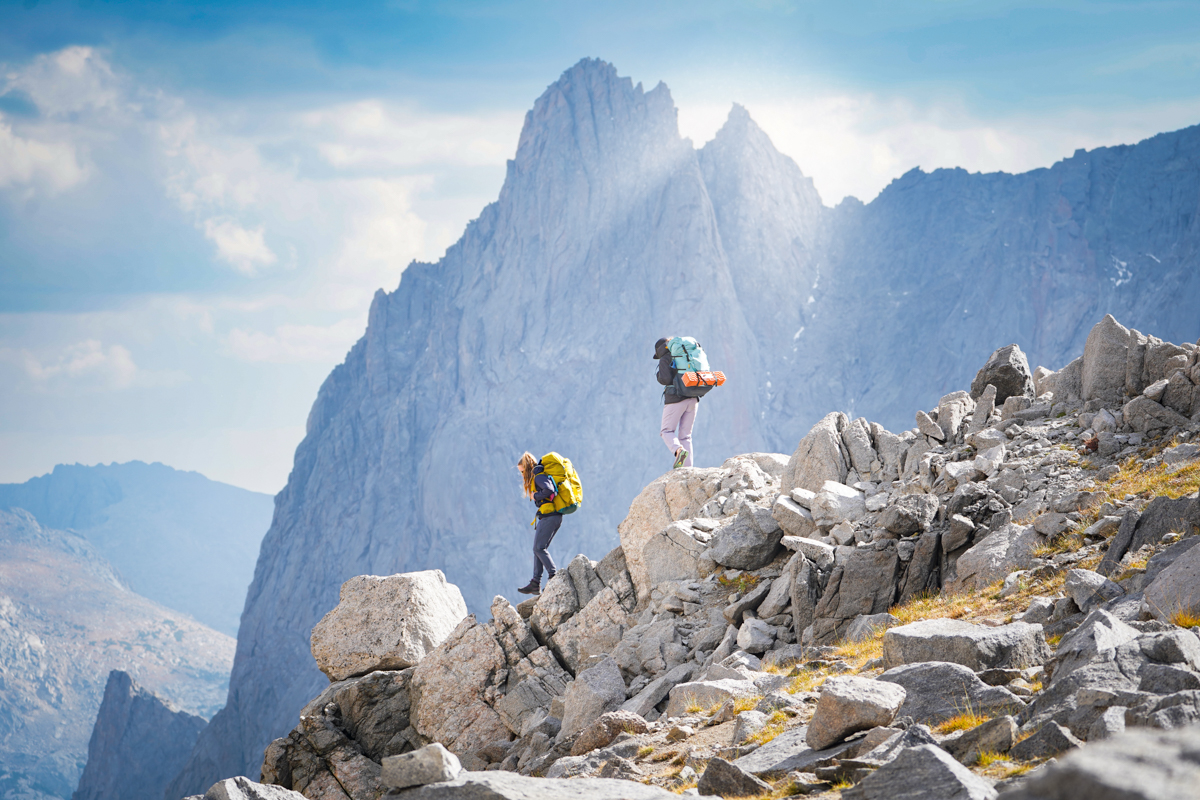
In 2025, the vast majority of hiking boots come in both men’s and women’s versions. In general, women’s boots are designed to fit narrower heels and ankles and higher arches and come in women’s sizing and a different set of colorways. There are also a few hiking boots that were designed specifically with women in mind, including the Merrell Siren 4 Mid GTX and Keen Terradora Explorer Mid, although unfortunately, these are not generally top performers (hence our decision to leave them off of the list above). While the majority of our female friends wear women’s boots, it’s important to note that some women might be better off opting for a men’s model (this is particularly important for those with high-volume feet and ankles). As with all clothing and footwear, your best bet is to try on before buying.
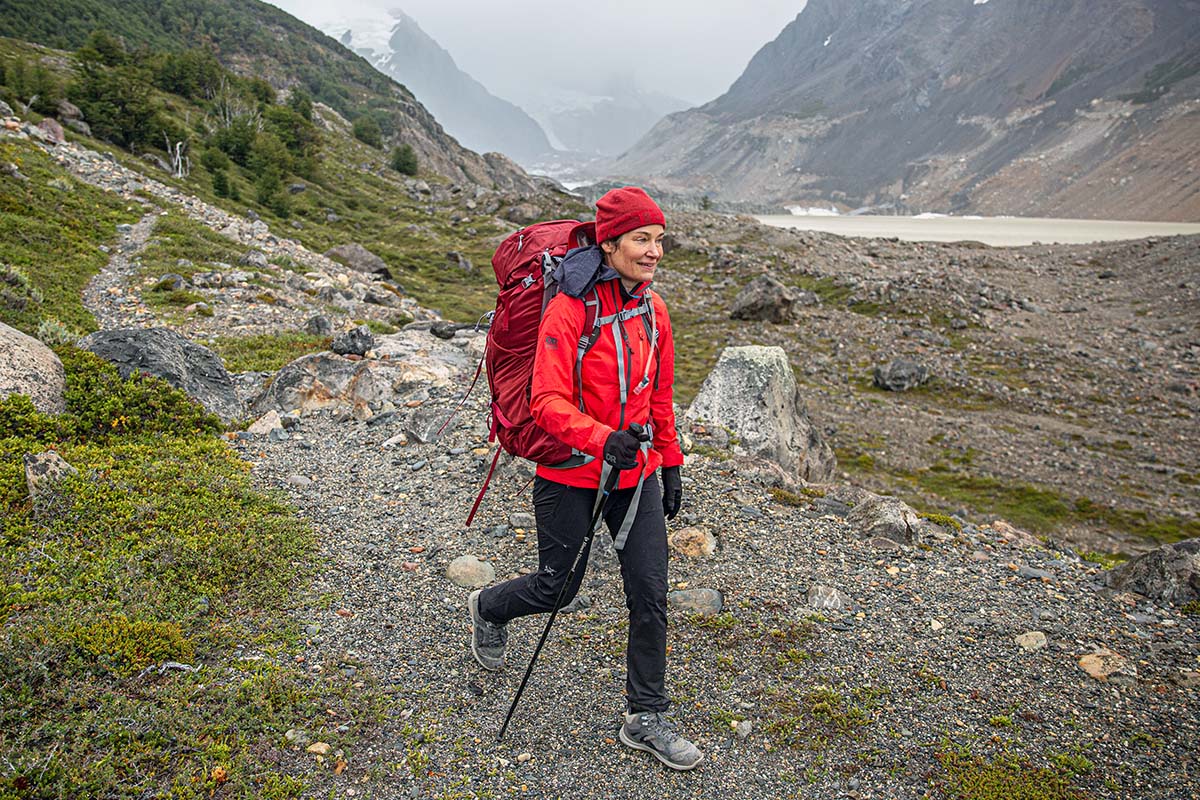
Lightweight
Perhaps no single piece of gear epitomizes the lightweight revolution more clearly than the lightweight hiking boot. These designs are flexible, cushioned (we see a lot of EVA foam here), and—of course—lightweight, which makes them a comfortable and speedy choice for fast-and-light enthusiasts and well-conditioned hikers. And even though some boots in our lightweight category actually look like trail running shoes, it's important to note that they generally feature a noticeably stiffer and more stable underfoot feel—take the La Sportiva Ultra Raptor II Mid Leather GTX as an example, which features a TPU heel stabilizer and foot-hugging leather upper. However, compared to models in our all-around or mountain categories, lightweight boots are much less supportive and protective overall (especially at the ankle), and their durability falls particularly short.
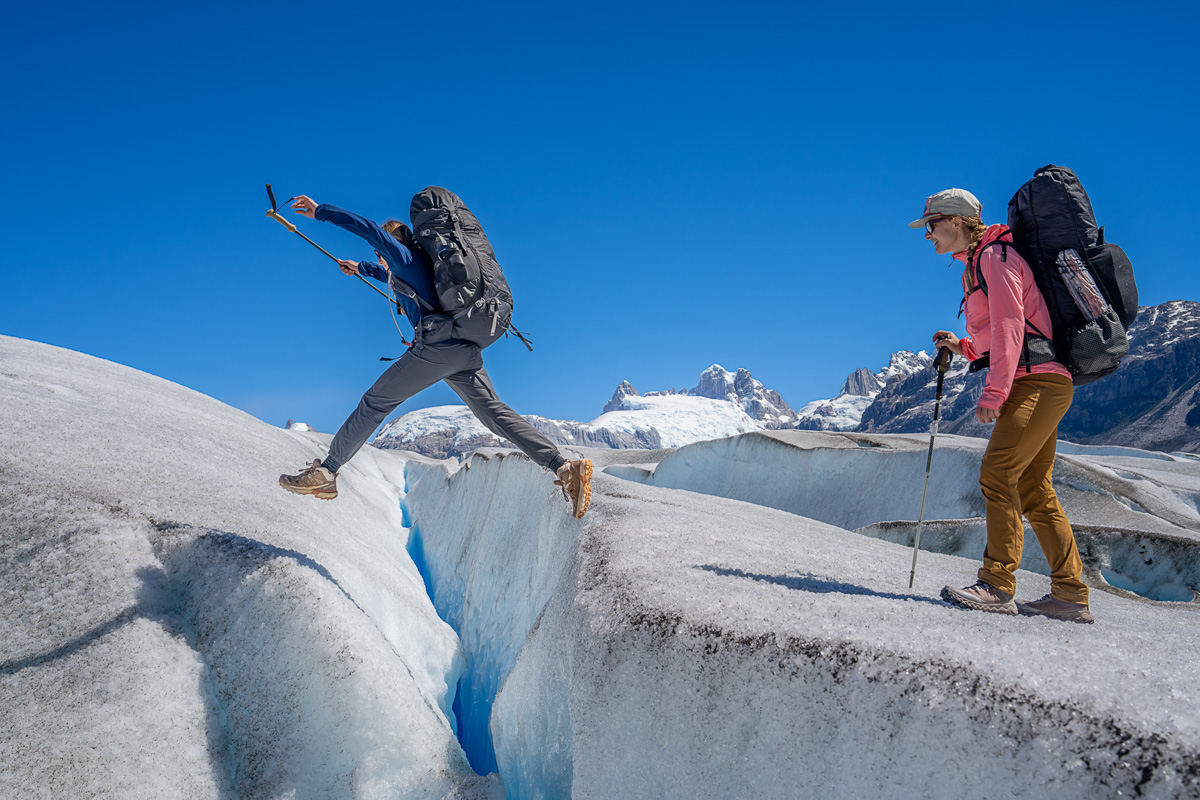
All-Around
Our all-around category represents the core of the market, running the gamut from lightweight synthetic designs to more traditional leather models. All of these boots extend above the ankle and offer great support and protection by way of sturdy outsoles, relatively stiff midsoles (look for additions like a TPU shank), generous rands and toe bumpers, and robust upper materials. Boots on the lighter end of the spectrum (like Salomon's 1-lb.-11.5-oz. Salomon X Ultra Mid) will feel more sprightly underfoot at the cost of a bit of durability and support, while beefy designs like the 2-pound-2.2-ounce Lowa Renegade Evo GTX Mid are better for those looking for that traditional hiking boot feel. Most hikers and backpackers will settle for a boot in our all-around category, while those with particular needs can bump up or down to a lightweight or mountain boot.
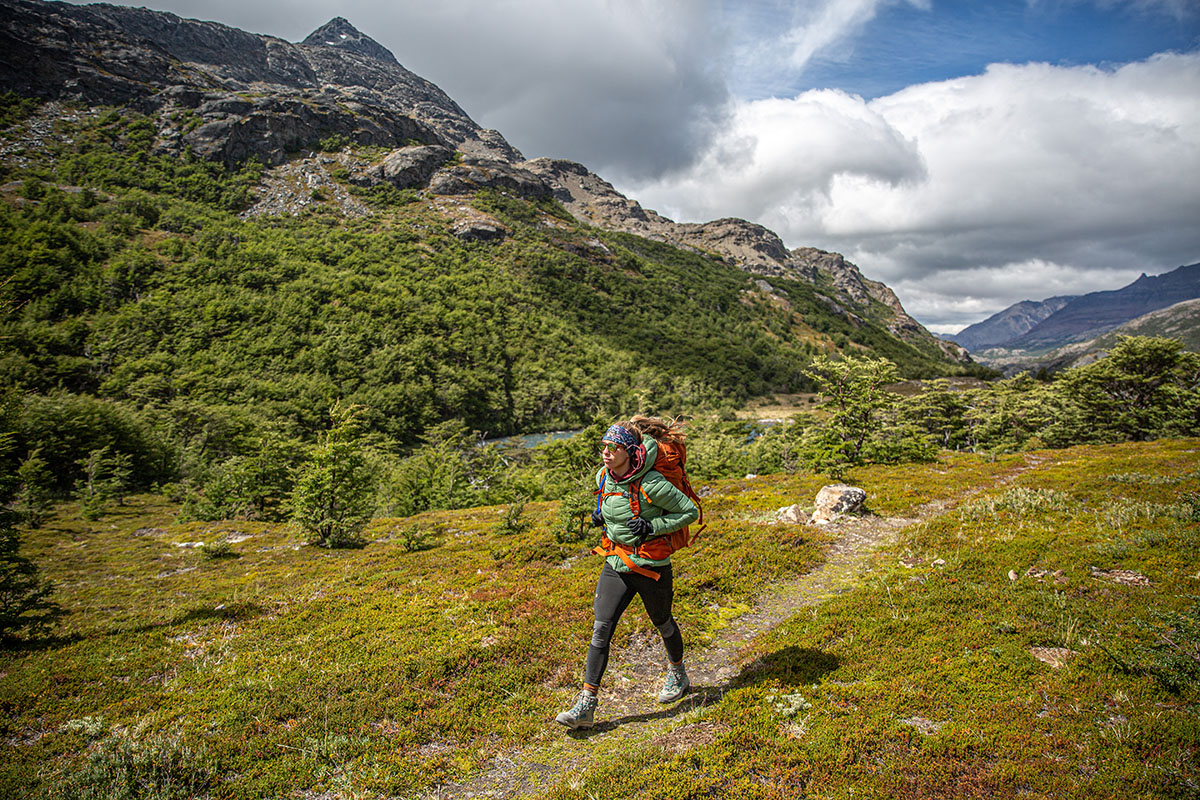
Mountain
Most of the designs on our list offer ample support for rooty and rocky trails, but when the going gets tougher (think off-trail terrain or sustained snow), you might want a bit more boot. Somewhere on the spectrum between hiking boot and mountaineering boot, designs in our mountain category are the most robust here and go one step further than a traditional hiker in terms of support (look for slightly taller collars and stiffer midsoles), durability and protection (most feature leather uppers), and traction. Given their rigidity, these boots also pair with aluminum crampons better than more flexible options. Mountain boots will generally be overkill on established trails (the Zamberlan Vioz GTX clocks in at a whopping 2 lb. 13.2 oz.), but those venturing into the alpine or carrying a particularly heavy load will appreciate the added performance. On the other hand, experienced hikers and those with strong feet can get away with lighter weight—yet still very capable—designs like the La Sportiva Ultra Raptor II Mid Leather GTX and TX Hike Mid Leather GTX.
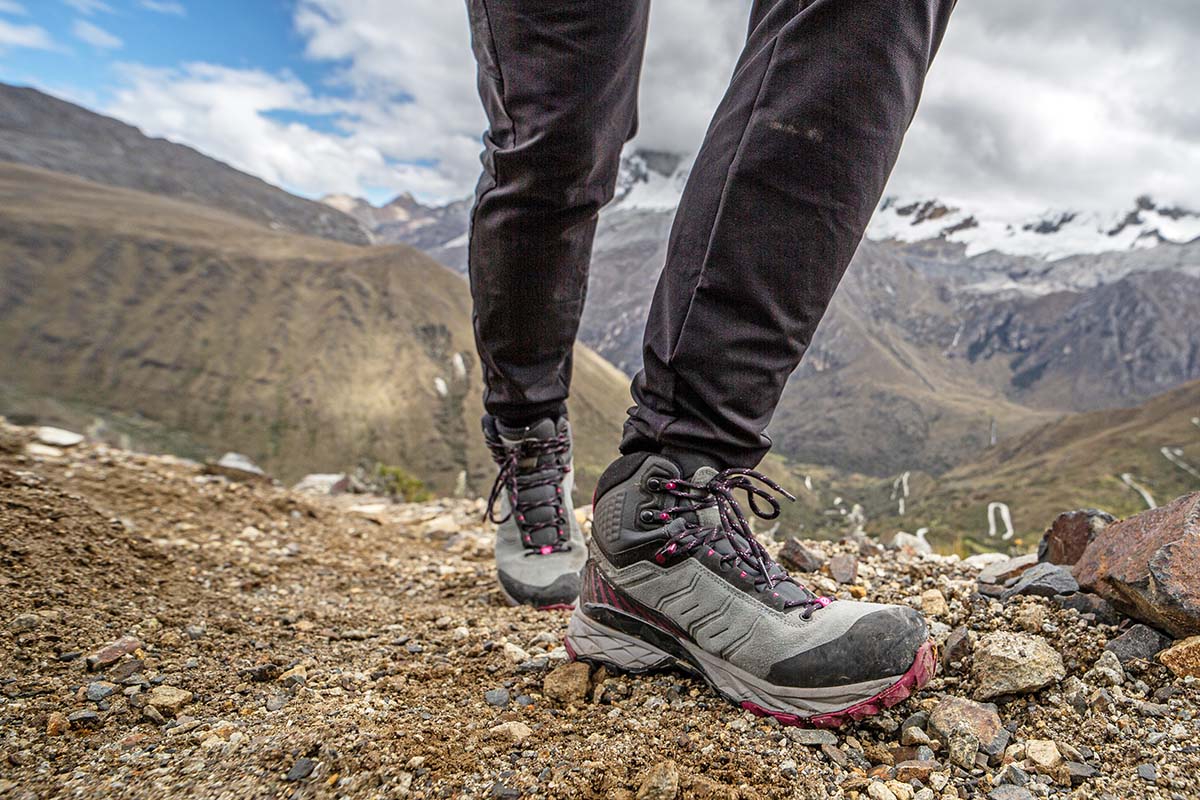
Looking at our list above, women’s hiking boots run the gamut from ultralight trail-running-inspired designs like the Altra Lone Peak Hiker 3 (1 lb. 8.1 oz.) to sturdy mountain-ready models that clock in well over 3 pounds for the pair. In general, the weight spec can tell us a lot about a boot: A lighter design will be less protective, supportive, and durable overall, but the benefits include less strain on the body (as the saying goes, a pound on the foot equals five on the back) and more flex and cushion, which often translate to increased comfort. Hikers and backpackers will want to aim for that sweet spot between performance and weight. If you’re sticking to the trail with a light load you can get away with a lightweight hiking boot, while those hauling extra gear or traveling cross-country will appreciate the added support of a heavier boot.
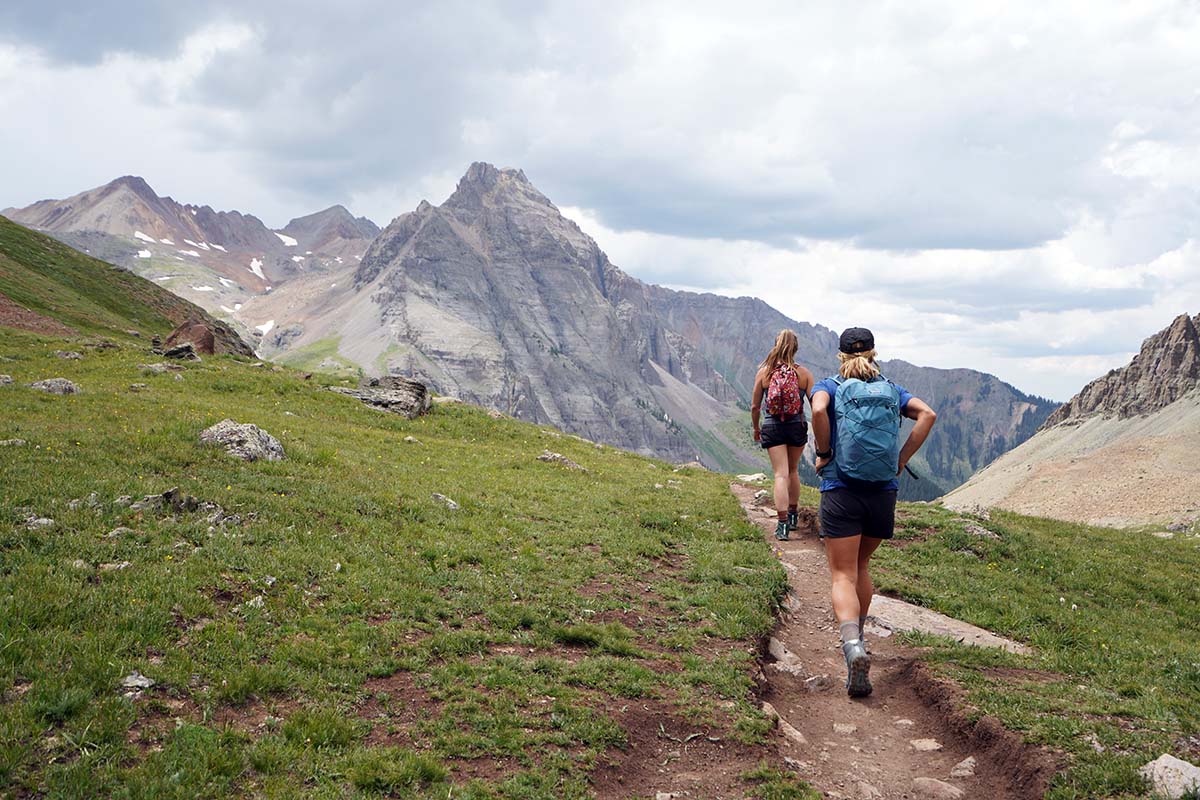
Hiking boots are designed to be stable underfoot, which typically involves a firm outsole and a piece of hard plastic inserted between the midsole and outsole, known as a shank. The length of the plastic can vary from just under the arch to the full length of the boot, depending on intended use. The benefit of a stiff boot is that with a solid platform, the feet will not have to work as hard during ascents and descents, and on off-camber terrain. For this reason, boots in our mountain category are among the stiffest here, and a great choice for off-trail travel with a heavy load. On the other end of the spectrum, lightweight boots generally forgo the additional structure of a shank, which translates to greater flexibility but less stability overall.
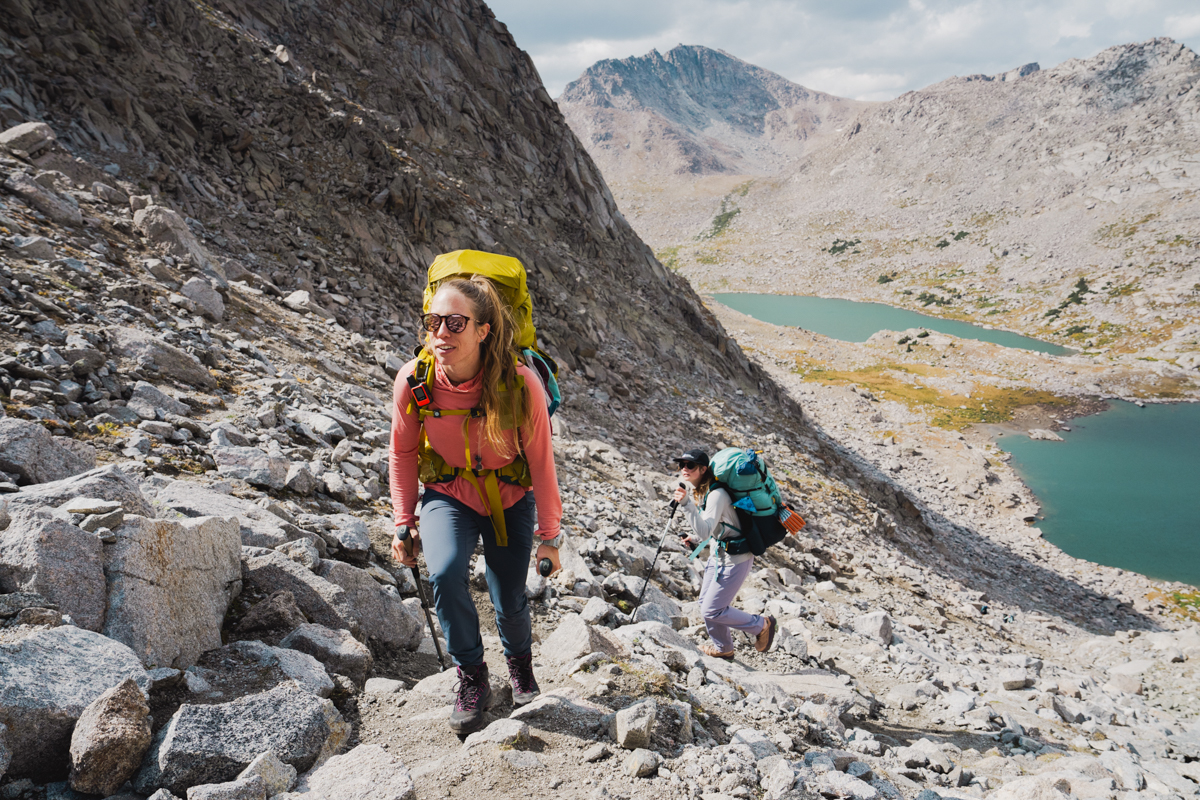
For day hikes on flatter or less technical terrain or if you're aiming to move fast and light, we can’t recommend a lightweight and flexible hiking boot enough. Boots like the NNormal Tomir or Keen's Zionic Waterproof Mid are standouts for these uses, provided that you’re fairly well conditioned and have no pre-existing ankle issues. As your trips get longer and your pack gets heavier, a more substantial boot that increases ankle support is a better decision, including the Lowa Renegade Evo GTX Mid or Vasque Breeze. On the extreme end, mountain boots like the Salomon Quest 4 are excellent for hiking in areas that require maximum support: off-trail bushwhacking, traversing an exposed area, or trekking over rough ground.
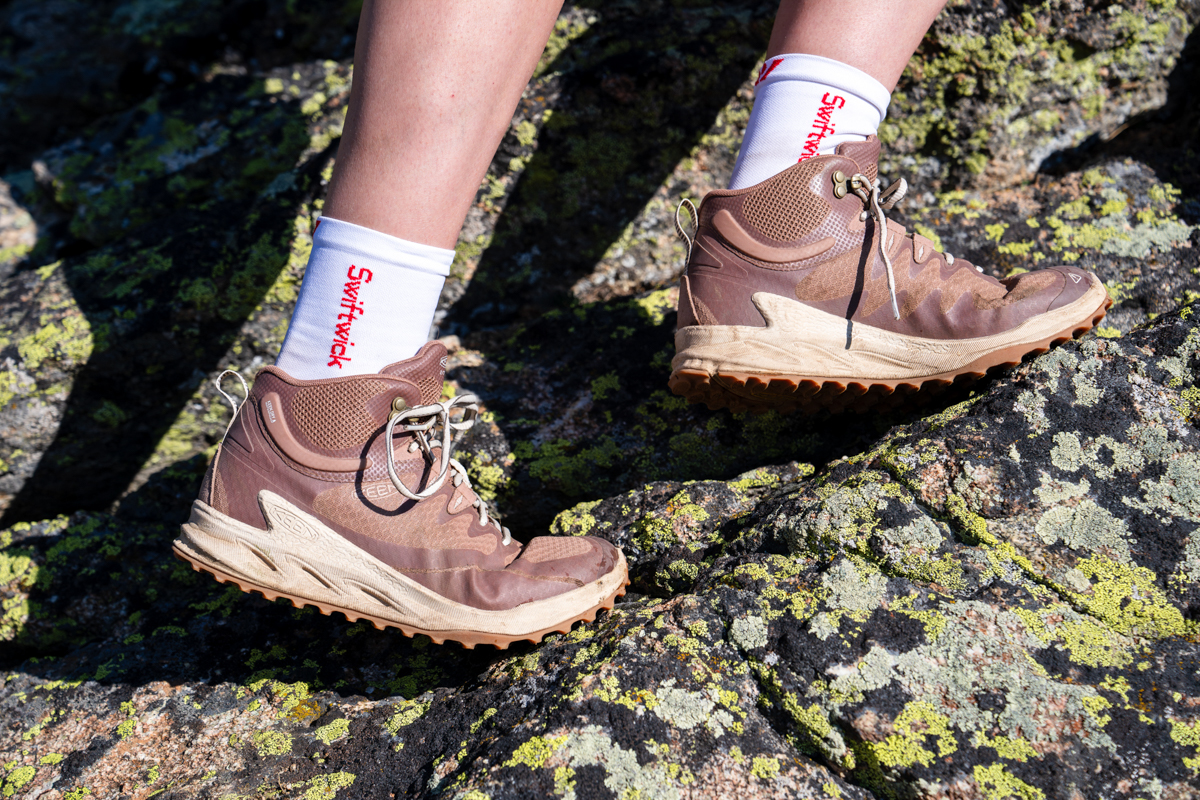
The vast majority of hiking boots are waterproof, keeping your feet dry while crossing streams, dodging puddles, or hiking during a light rainstorm. Most designs achieve this by way of a waterproof and breathable membrane inserted just inside the outer fabric. Gore-Tex liners are the most popular and reliable (as seen in designs like the Hoka Anacapa 2 Mid GTX), but even in-house technologies like NNormal's Sympatex are similar in terms of waterproofing performance (however, breathability can suffer with some of these designs). And in addition to the membrane, most boots also feature a water-repellent coating on the outside that helps to bead up and shed water droplets.
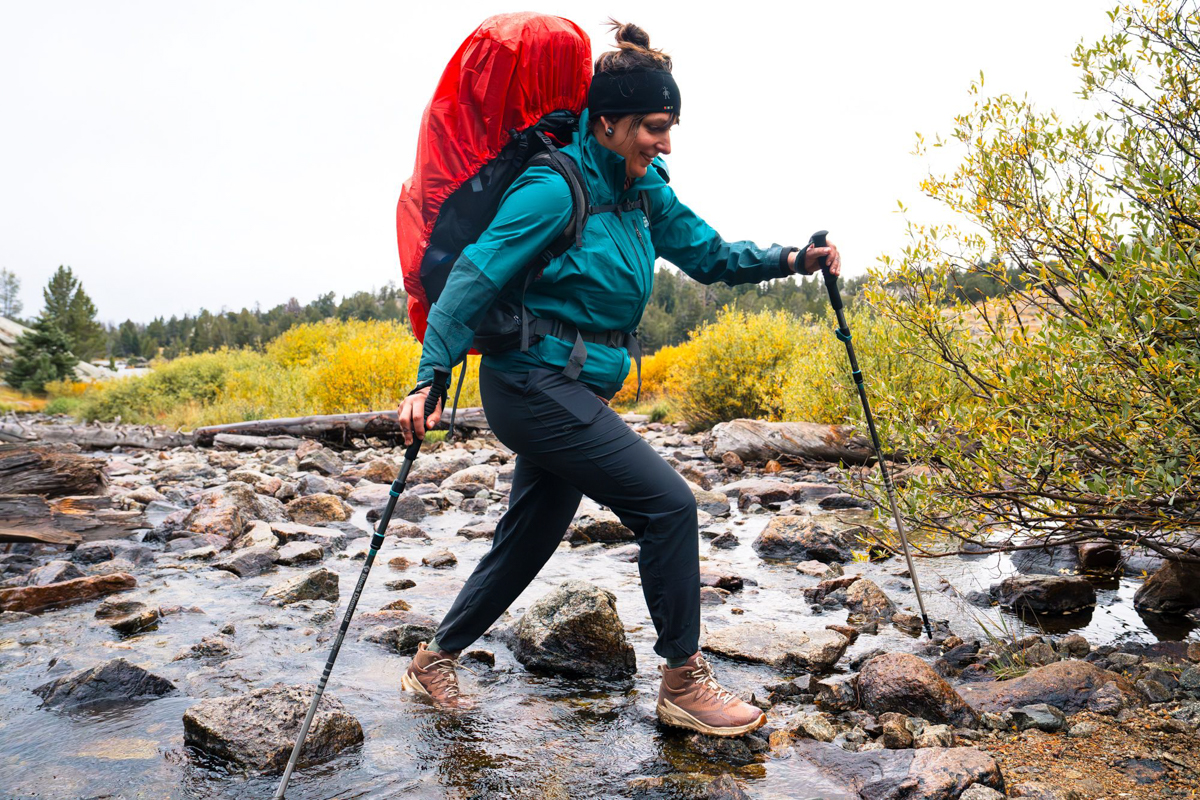
But before springing for a waterproof boot, it is worth asking if you need the added protection. There are a number of downsides to this technology: The extra layer adds weight, impacts breathability fairly significantly (discussed below), and will run you around $20 to $30 more. Further, if you do happen to get water inside your boot (this can easily happen in deep snow or water), it doesn’t drain as well and won’t dry out nearly as quickly as a non-waterproof option. In the end, we like the added assurance of a waterproof boot for shoulder-season hiking or backpacking in the mountains, but recommend a non-waterproof design for summer hikes or uniquely hot and dry environments like the Utah desert. For more on the waterproofing debate, see our article Do You Need Waterproof Hiking Shoes?
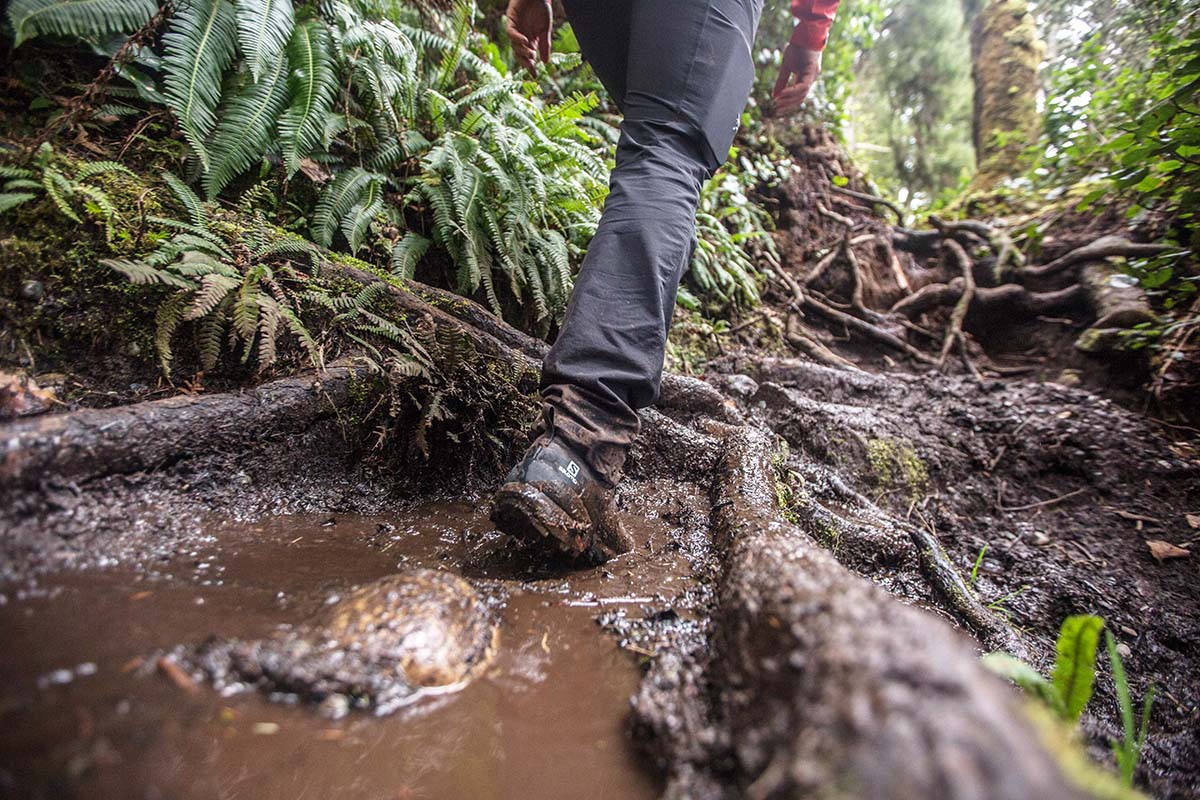
No matter what marketers say, making a boot waterproof inherently impacts breathability. By keeping water from entering from the outside, less moisture (your sweat) can quickly and easily escape from the inside, which means all forms of waterproof footwear can run warm in the summer months. There are, however, big differences between boot models in their ability to ventilate.
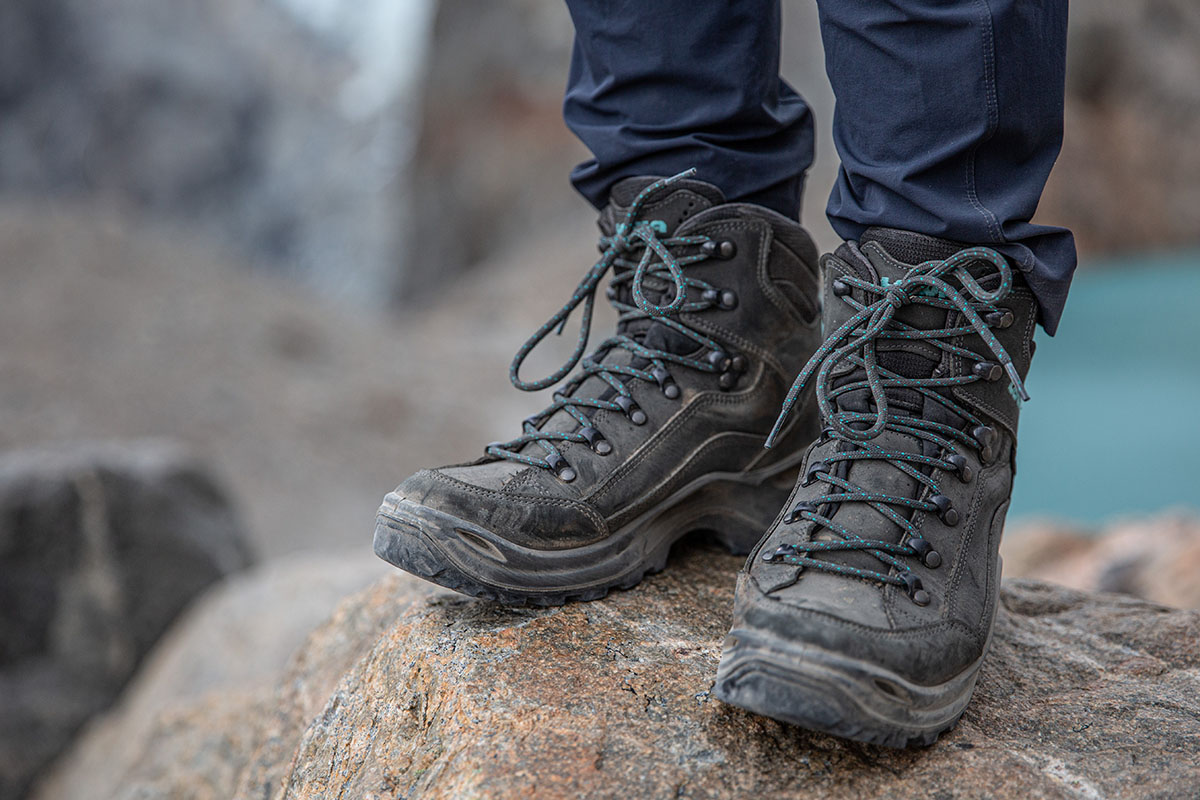
We’ve found that heavyweight leather boots with a Gore-Tex lining are often the worst performers, while the Gore-Tex Surround in the mesh-heavy La Sportiva Nucleo High II is a step above. In between, the Lowa Renegade and Salomon Quest 4 both perform decently with their nylon and leather construction and Gore-Tex liners, and are completely suitable for summer backpacking trips. And if you are willing to ditch the waterproof lining altogether, boots like the Merrell Moab 3 Mid and Altra Lone Peak Hiker 3 are great options for hikers and backpackers.
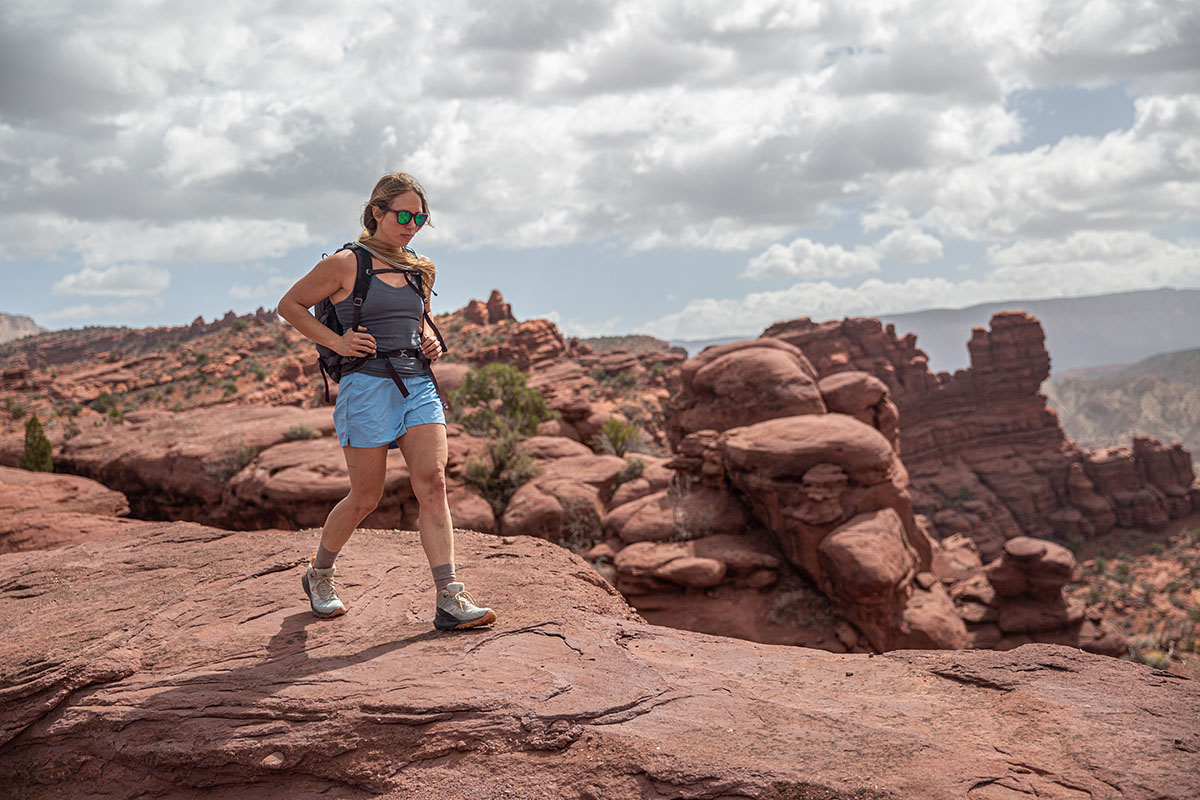
Laces are an overlooked feature on hiking boots but play an important role in fit and comfort. Most laces extend to the ankle with standard eyelets and continue up the collar using hooks that come completely undone so you can get in and out of your boot with ease. Some of the more advanced designs feature locking hooks at the crook of the ankle, which both locks your foot in place and allows you to tailor your fit throughout (loose in the forefoot to accommodate for swelling and tight around the ankle for stability, for example). Every so often we see a single-pull speed lace design used in a hiking boot (such as Salomon’s Quicklace in their Cross Hike 2 Mid). While we’re fans of the convenience of the Quicklace system in a hiking shoe, it’s a tricker sell for us on a mid-height boot as you only get one option for tightening or loosening your boots, compared to the versatility of a standard design.
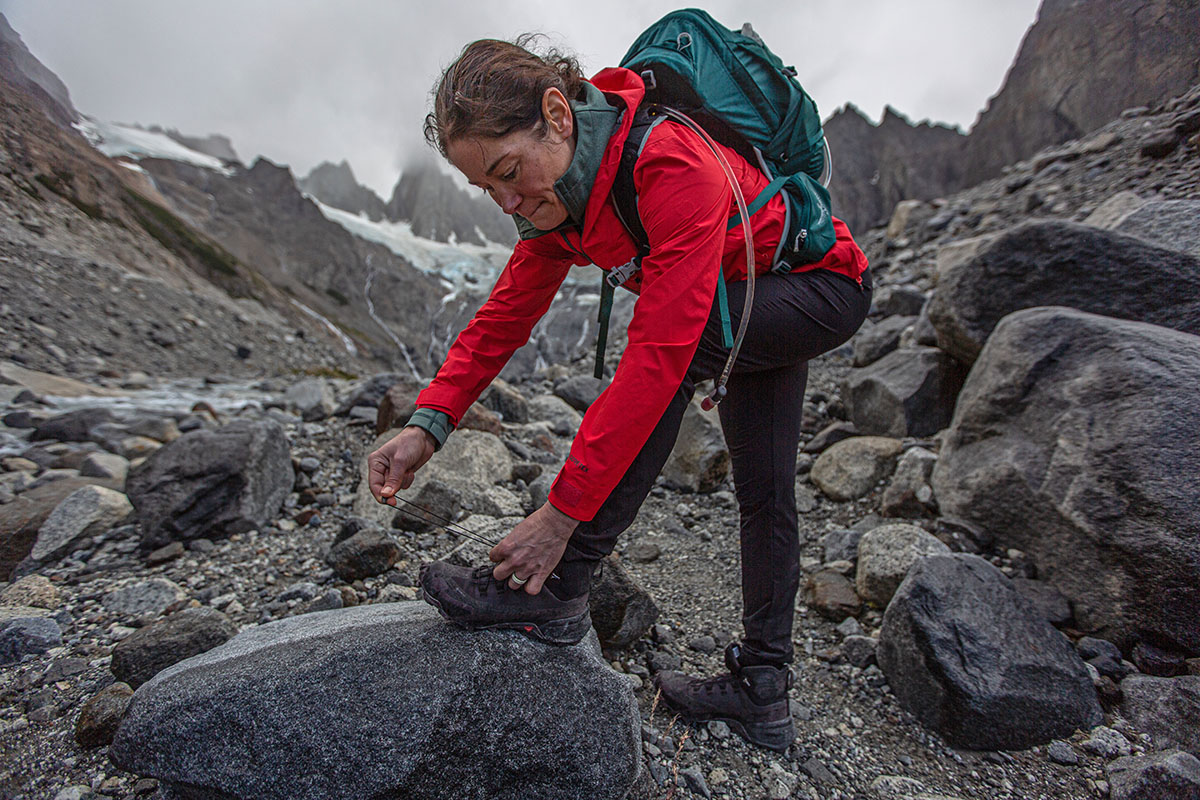
A hiking boot’s upper refers to the material above the outsole and the midsole—essentially, all of the fabric that surrounds your foot. Most often, a boot’s upper will be made with a mix of synthetic (typically nylon), mesh, and leather. The type of material correlates directly with the boot’s durability, water resistance and breathability, and weight. Below we spell out the pros and cons for the most common materials used for hiking footwear.
Synthetic Nylon and Mesh
Woven nylon as well as open mesh nylon panels are common on boots in our lightweight and all-around categories. These synthetic materials usually excel in terms of breathability and weight savings, and they can dry out more quickly when wet. However, they are not known for their durability, and don’t offer as much protection as a thicker leather boot. Synthetic materials also don’t conform to your foot over time as well as leather, but in most cases, the overall fit is still comfortable and snug. Many designs here feature fully synthetic uppers, while others (like the Salomon Quest 4 GTX) have a mix of synthetic and leather for the best of both worlds.
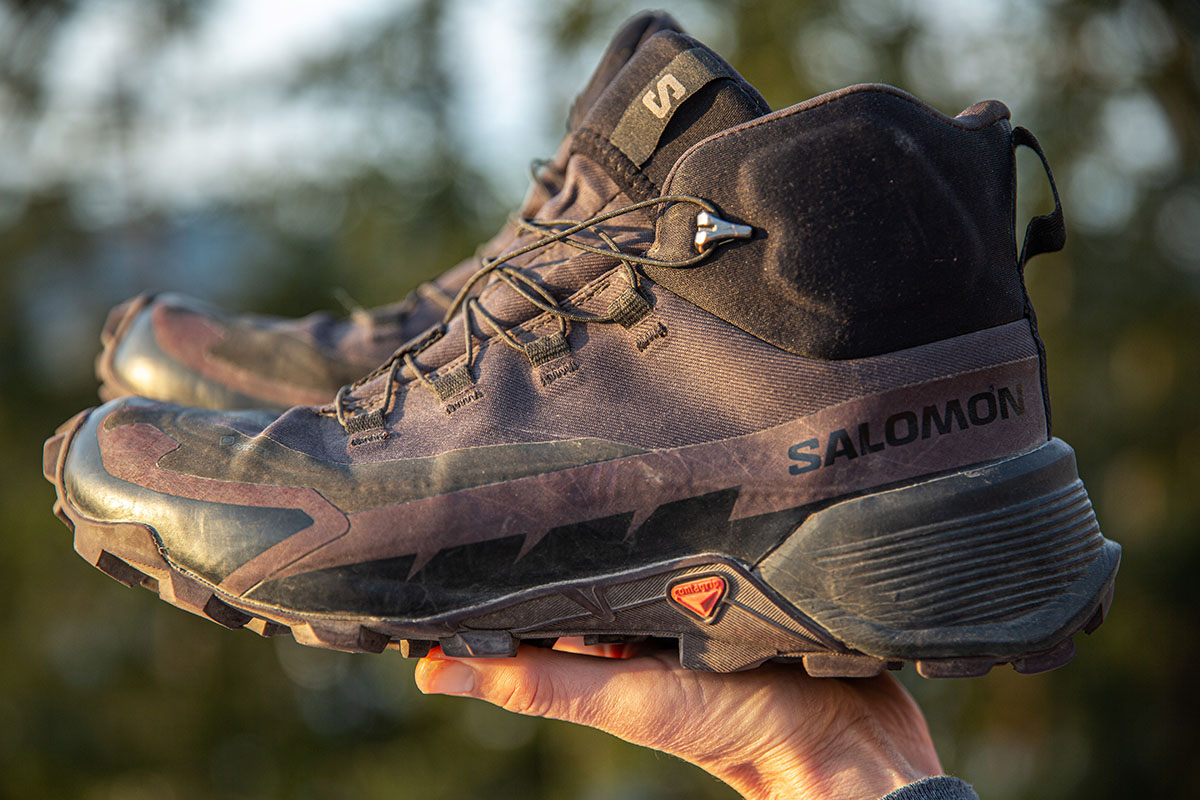
Suede or Nubuck Leather
Suede and nubuck leather have a very similar brushed appearance, and are common sights on hiking boots in our all-around and mountain categories (the lightweight Lone Peak Hiker 3 is also suede). Both materials are lighter and more flexible than traditional full-grain leather, which means they offer more breathability and an easier break-in period, aren't as prone to showing scuff marks, and shave precious ounces from your feet. Expect nubuck to be tougher than suede—suede is derived from the underside of an animal's skin, while nubuck comes from the outside (and is sanded down to achieve the velvet-like finish)—which is the main reason we see it used more in heavy-duty hiking boots. In the end, both materials are great alternatives to thick full-grain leather, and much more prevalent in today's modern boots.
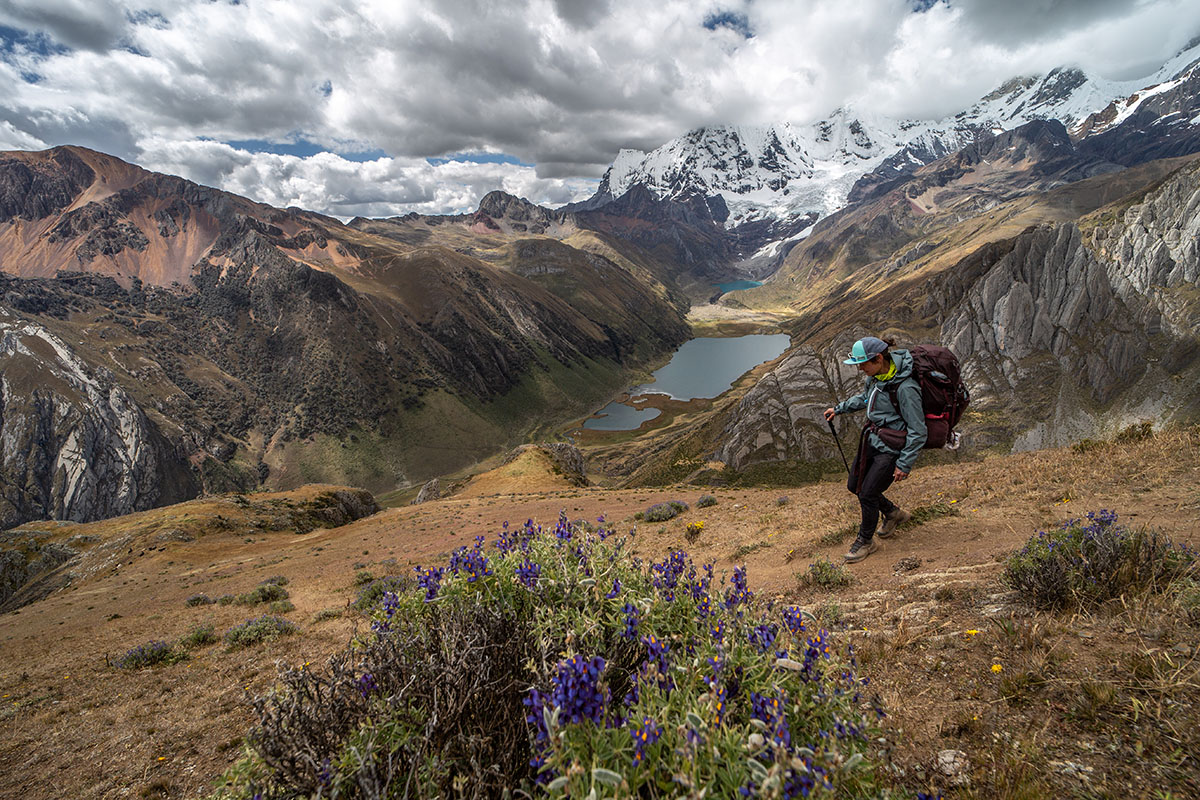
Full-Grain Leather
Compared to nubuck and suede, full-grain leather is thicker, stiffer, and tougher overall. You’ll find one-piece leather uppers on high-end boots like the Zamberlan Vioz GTX. These designs are neither lightweight nor particularly breathable, but they’re incredibly tough and water resistant. Leather does require some maintenance to keep in good shape (you’ll want to treat it with a conditioner like Nikwax), but the payoff is a solid construction that’s built to outlast everything else on the market. As an added bonus, some designs can be resoled, so you don’t need to replace the whole boot once you wear down the lugs.
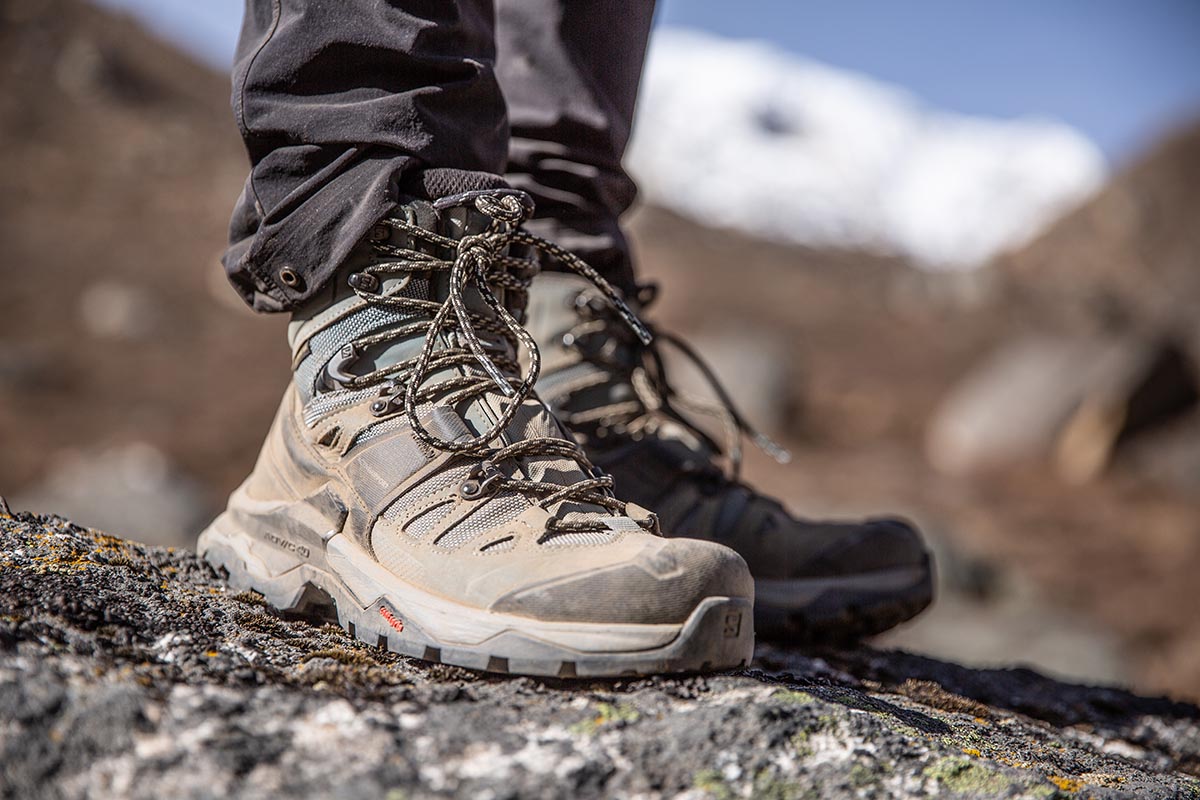
Hiking on off-camber terrain or while carrying a heavy load can put a decent amount of stress on your feet, so you’ll want to make sure your hiking boot offers a sturdy platform. Combined with the rubber outsole, the midsole plays an essential role in stability, shock absorption, and protection from sharp rocks underfoot. Depending on the design, midsoles vary from very thin and flexible (as with lightweight boots) to stiff and substantial (like we see in leather mountain boots). Most include EVA foam, TPU, or a combination of both in their construction.
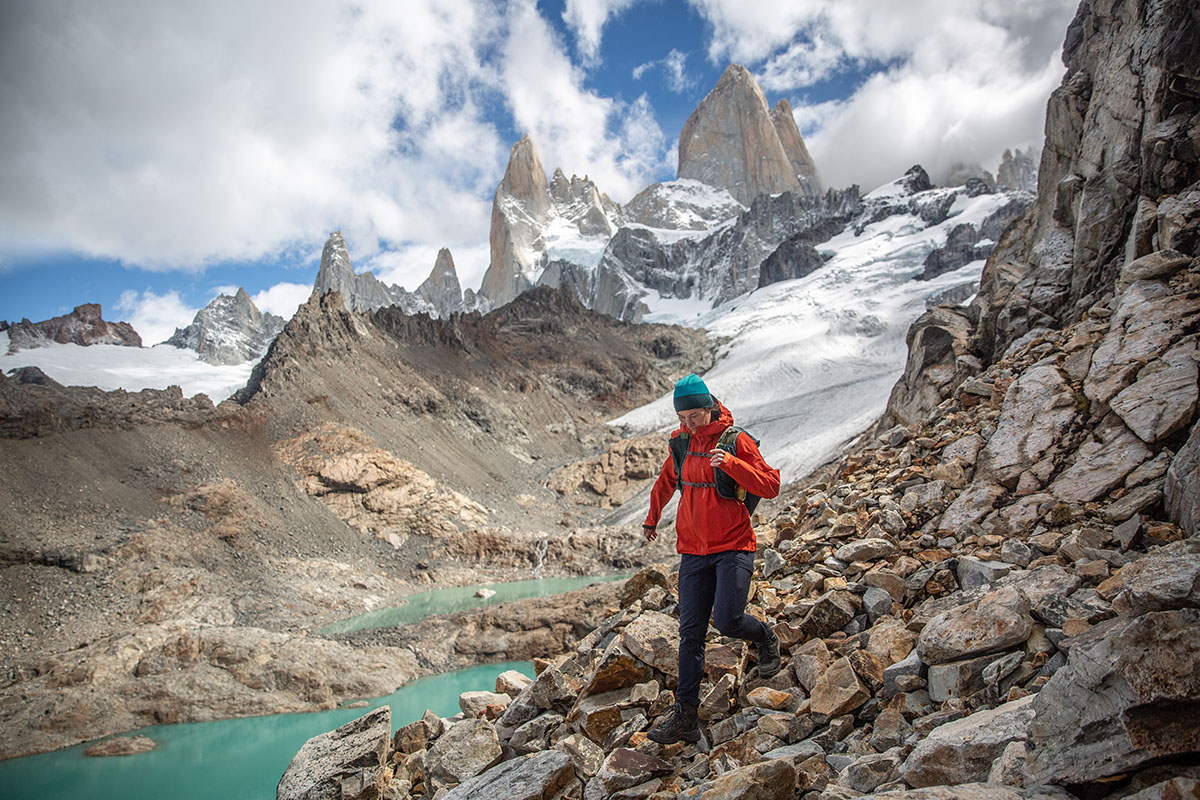
EVA
The majority of lightweight hiking boots use EVA foam in the midsole. The cushy, soft material takes some of the sting out of your heel or midfoot impacts and is also extremely lightweight. Not all EVA should be treated equally, and the proprietary versions can vary from super soft to mildly stiff. For logging serious miles on tougher terrain, we prefer a firm and supportive midsole as opposed to too much cushioning. If we’re planning on moving quickly on easy trail, softer cushioning is a better bet and commonly found in trail-running-inspired designs like the NNormal Tomir. However, soft midsoles have a tendency to break down over time, so expect these boots to pack out more quickly than dedicated hiking boots.
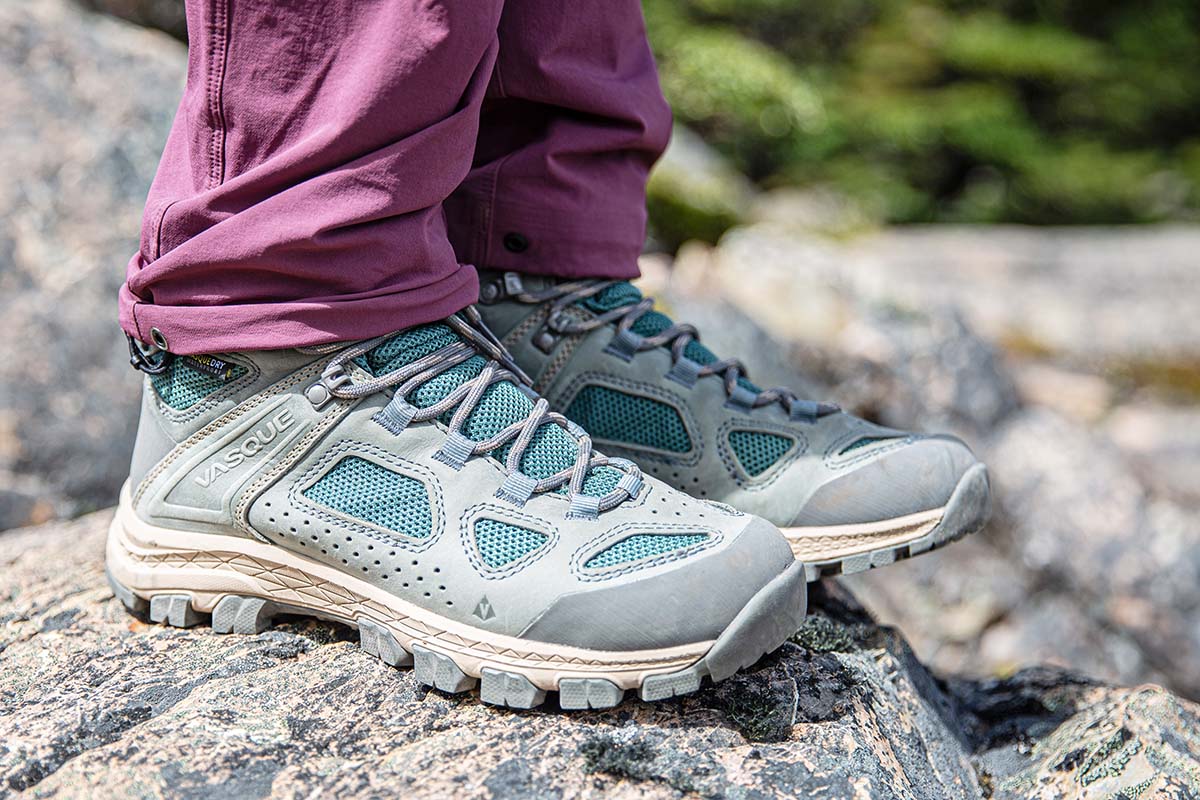
TPU
For tougher applications or when you want to isolate your feet from rough impacts, manufacturers will use a thermoplastic polyurethane (TPU) midsole. This durable material is far less cushy than EVA but provides better protection and stability underfoot—for this reason, it’s common in boots in our all-around and mountain categories but not used in the trail-runner-inspired designs above. Boots with TPU in their midsole will also keep their shape longer and won’t be prone to compressing like EVA. Because both midsole types have valid applications, it’s common for a manufacturer to use a TPU frame or heel for stability and toughness and add in EVA underfoot to increase comfort.
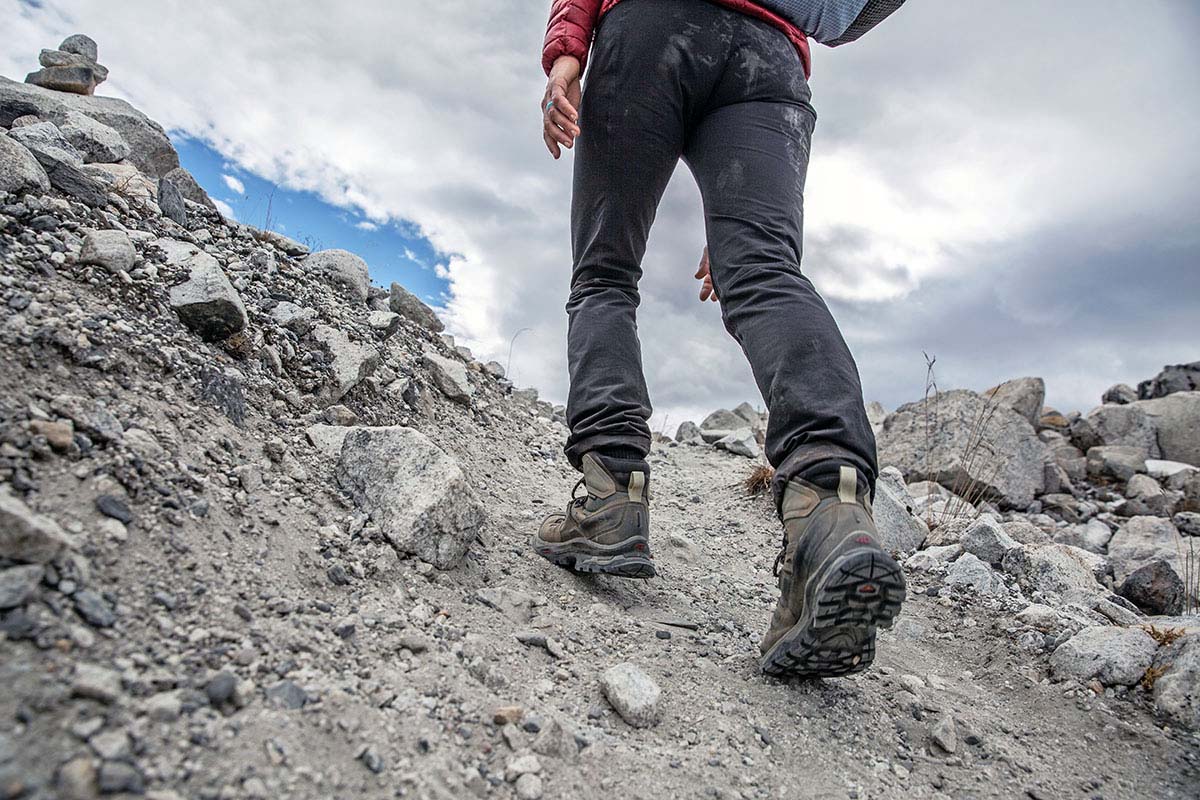
One of the hallmarks of a hiking boot is good traction on a variety of terrain. In a way that more casual footwear can never match, hiking and trail running footwear are leaps and bounds better when the going gets rocky, slippery, and steep. Vibram is the gold standard when it comes to outsole rubber, but not all Vibram compounds should be treated equally: The rubber manufacturer tailors their blends and designs for the specific footwear and brands. Some boots have much larger and sharper lugs underfoot for serious grip in mud, while others prioritize sticky rubber for scrambling over rocks. There are also more entry-level options that just do well on easier trails, like the lugs you’ll find on the bottom of the Merrell Moab 3 Mid Waterproof.
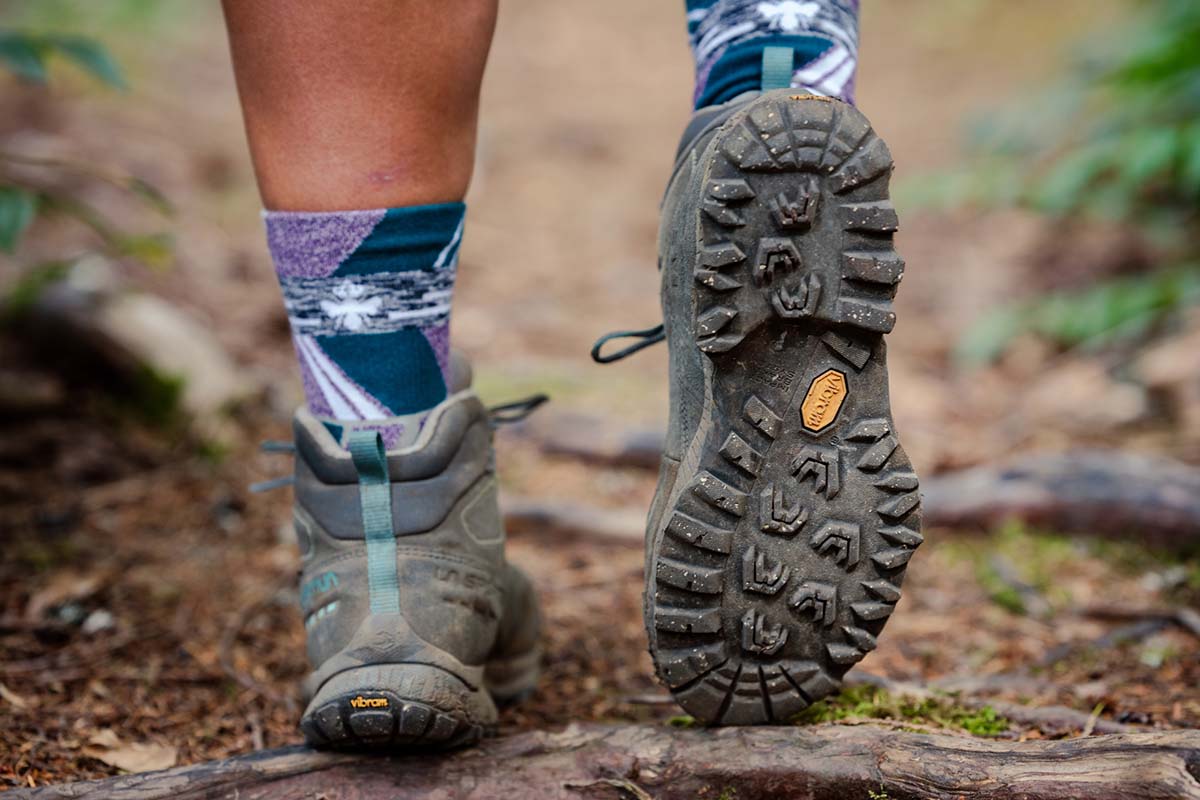
Salomon is one brand that doesn’t outsource their traction needs. Instead, they use their in-house Contagrip for all of their hiking and trail running models. We’ve found the level of quality and performance is on par with Vibram’s offerings, from anything from their fast-and-light Cross Hike 2 to the burly Quest 4. Keep in mind that, like Vibram, Contagrip compounds can vary from boot to boot (there are a number of different compounds, including Contagrip MA, MD, and TA).
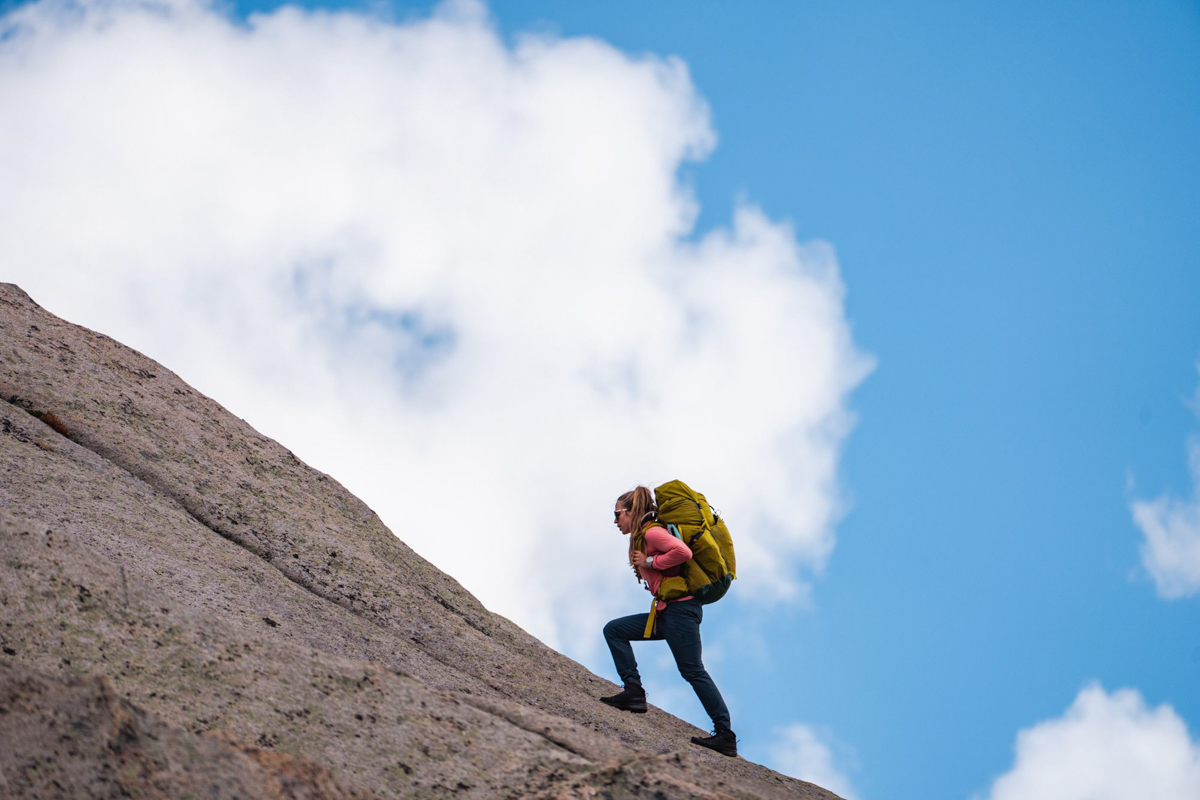
Toe caps or rubber rands cover the front of many hiking boots, and we consider them an essential element of backpacking boot design. These thick pieces of rubber are there to keep your toes in one piece should you accidentally—and in our case, eventually—kick a rock on the trail. Some standouts from our list above include the Keen Targhee IV and La Sportiva Ultra Raptor II Mid Leather GTX, which have protection that wraps completely around the front of the foot. To cut weight, some manufacturers will occasionally take away or diminish this feature, including the Altra Lone Peak All-Wthr Mid boots. After stubbing our toe multiple times while scrambling a 14er wearing the Altra, we definitely prefer that it included more substantial toe protection, but it’s just a compromise in opting for a minimalist boot.
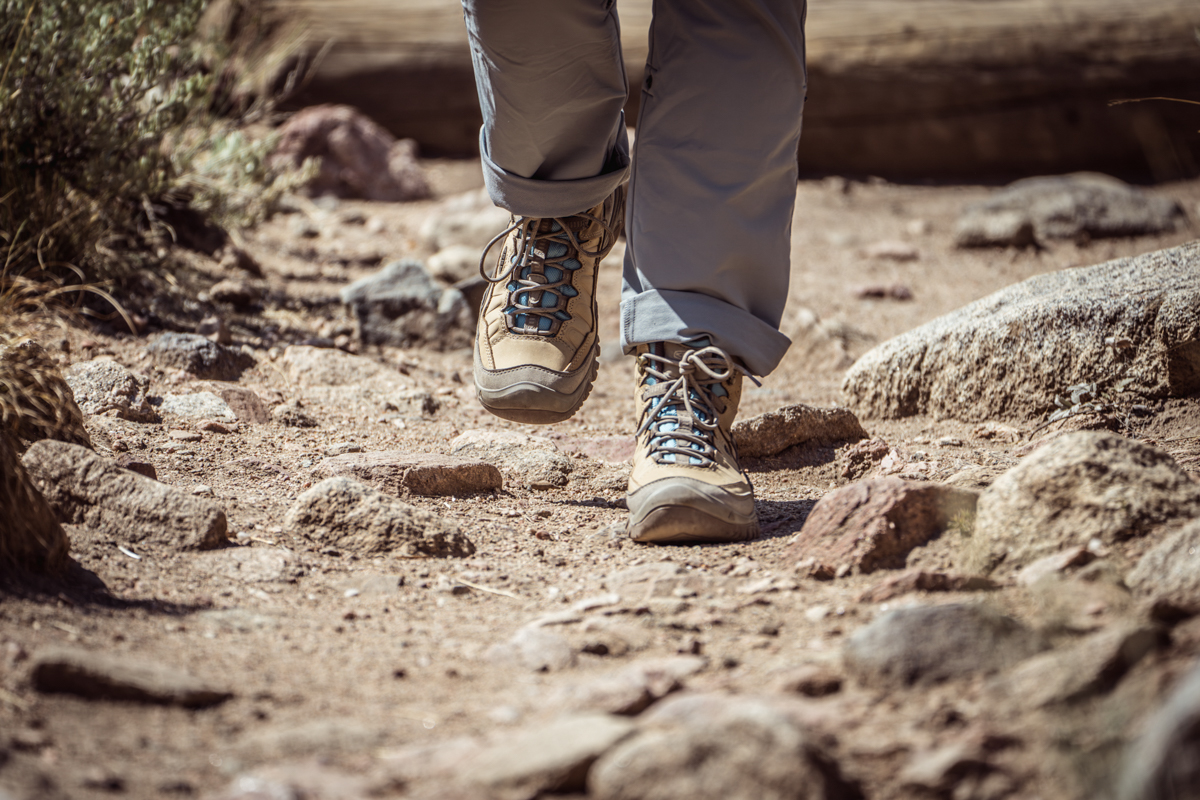
Getting a proper fit can be a real pain, and in many cases the blame is a generic, flat insole. Thankfully, removing your stock insoles is super easy, and replacing them with an aftermarket model that’s specific to your foot size and shape can remedy most boot maladies. New insoles can provide more or less volume to fill out the boot, improve the fit under the arch, and increase or decrease the cushion and impact shock. We recommend checking out Superfeet insoles for their wide selection of options and trusted reputation in running shoes, ski boots, and hiking footwear.

In 2025, one of the main ways that brands are innovating is with sustainable design practices that seek to mitigate our impact on the planet. When it comes to footwear, manufacturers are turning to recycled and recyclable materials for everything from laces and lining to foam midsoles and rubber outsoles. It’s in the interest of brands to advertise their products’ recycled content, and this information can be easily found on product webpages and tags. Another way to shop sustainability is to keep durability in mind—if it fits your hiking style, a boot with a more hardwearing upper and sole might last you twice as long as a lightweight design, which cuts your consumption in half. It’s also worth noting services like Danner's Recrafting, which is committed to rebuilding and resoling footwear to keep it on the trail and out of the landfill. And when the time does come to retire your beloved hiking shoes, consider recycling them via programs like Ridwell or TerraCycle.
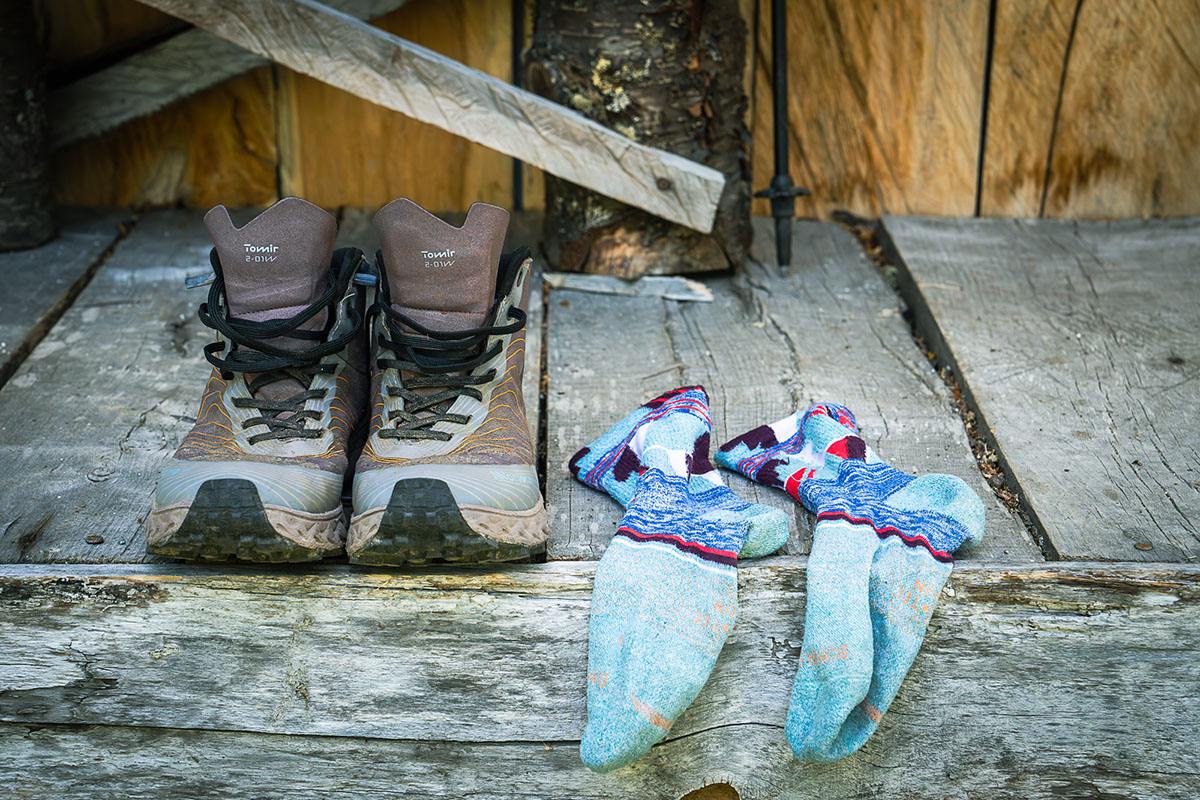
One of the key decisions in choosing hiking footwear is selecting either an over-the-ankle boot or low-top shoe. Each style has its respective strengths, and we use them interchangeably for hiking and backpacking trips. The key differentiators are protection, stability, and weight. For rocky terrain, water crossings, snow, and carrying a heavy backpacking pack—or if you have weak or injured ankles—a boot is our preferred option.
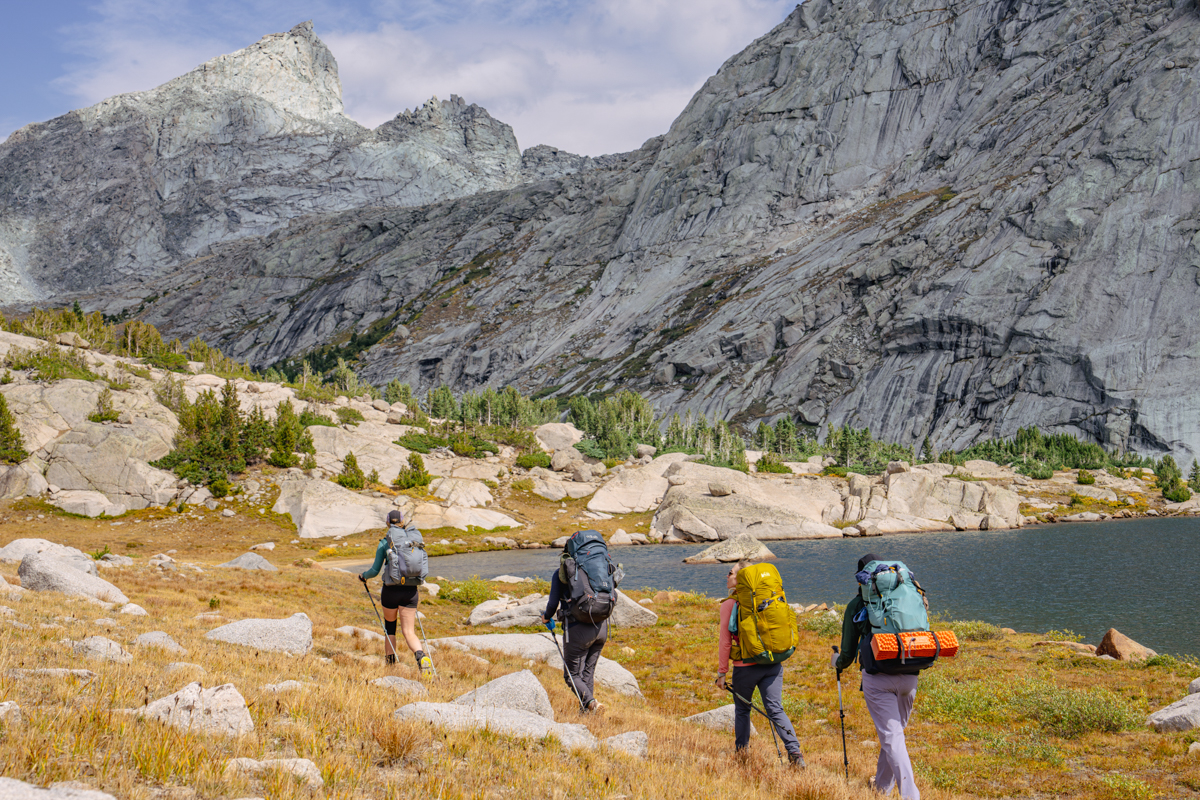
On the other hand, a low-top style trims away material and weight, making it the clear choice for those focused on moving fast and light without a large pack (especially in milder weather conditions or on easy trail). Lightweight mid-height designs can be a nice middle ground, with some of the added protection of a boot alongside the nimble feel of a shoe. There isn’t a definite right answer in this debate, but the weight of your gear and style of hiking can make the decision a lot simpler. For more on the topic, see our article on the best women's hiking shoes.
Back to Our Top Women's Hiking Boot Picks Back to Our Women's Hiking Boot Comparison Table